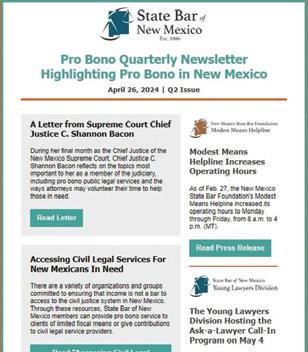
New Mexico State Bar Foundation Center for


New Mexico State Bar Foundation Center for
DECEMBER 3
That's a Wrap: A Review of Emerging Ethics Issues in 2024 1.0 EP
11 a.m.–Noon Webinar
DECEMBER 3
Hot Tips and Hot Water: Best Practices to Help Reduce Professional Liability Risks
1.0 EP
1–2 p.m. Webinar
DECEMBER 6
2024 Family Guardian ad Litem Institute
5.7 G, 1.2 EIJ
8:30 a.m.–5 p.m.
In Person & Webinar
DECEMBER 7
Navigating Cybersecurity Regulations in a Digital World
2.0 G, 1.0 EP, 1.0 EIJ
9 a.m.–2:15 p.m. Webinar
DECEMBER 10
Discovering Implicit Biases in Jury Selection
1.0 EIJ
11 a.m.–Noon Webinar
DECEMBER 10
Ethical Issues Relating to Smartphone Use
1.0 EP
1–2 p.m. Webinar
DECEMBER 11
2024 New Mexico Tax Law Symposium
5.2 G, 1.0 EP, 1.0 EIJ
8 a.m.–4:55 p.m. In Person & Webinar
DECEMBER 11
Living in a Cloud-based World - The Next Generation of Digital Evidence 1.0 G
11 a.m.–Noon Webinar
DECEMBER 11

DECEMBER 17
What Jazz and the Blues Teach about Bias and Inclusion in the Law featuring Stuart Teicher 1.0 EIJ
3:15–4:15 p.m.
In Person & Webinar
Ethics, Juror Misconduct, and Jury Tampering: The Murdaugh Motion For New Trial
2.0 EP
1–3 p.m. Webinar
DECEMBER 12
Practical Ways to Fight Gender Bias and Sexism in Negotiations featuring Marty Latz
2.0 EIJ
10 a.m.–Noon Webinar
DECEMBER 12
Negotiation Ethics: Winning Without Selling Your Soul featuring Marty Latz
2.0 EP
1–3 p.m. Webinar
DECEMBER 13
2024 Natural Resources, Energy and Environmental Law Annual Institute
5.0 G, 1.0 EP
8:30 a.m.–4 p.m. In Person & Webinar
DECEMBER 17
Airplane Etiquette, Celebrity Sightings, and Attorney Ethics featuring Stuart Teicher 3.0 EP
8:45 a.m.–Noon In Person & Webinar
DECEMBER 17
Legal Writing Rules You SHOULD Be Breaking featuring Stuart Teicher
2.0 G
1–3 p.m.
In Person & Webinar
DECEMBER 17
Learn Mindfulness to Curtail Implicit Bias and Make Ethical Decisions
1.0 EIJ
11 a.m.–Noon Webinar
DECEMBER 19
Killers of the Flower Moon: The Osage Murders and How Attorneys can Combat Bias
1.0 EIJ
11 a.m.–Noon Webinar
DECEMBER 19
Practical Lessons in Diversity, Equity & Inclusion in Law Practice
1.0 EIJ
11 a.m.–Noon Teleseminar
DECEMBER 20
Elimination of Bias–Combating Age Bias in the Legal Field
1.0 EIJ
11 a.m.–Noon Webinar
DECEMBER 20
Thurgood Marshall’s Coming!
2.8 EIJ
1–4 p.m. Webinar
DECEMBER 31
Why Women Attorneys Get Paid Less: What's Gender Bias Got to Do With It
1.0 EIJ
11 a.m.–Noon Webinar


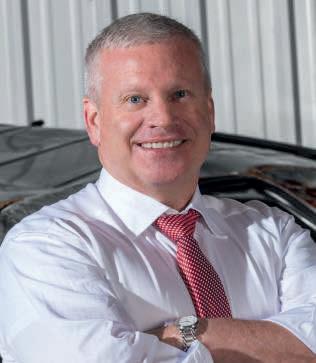
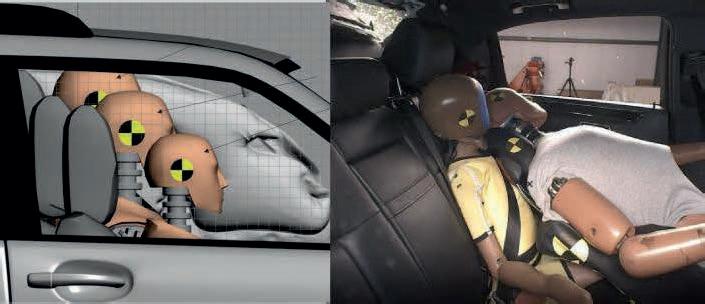






Est. 1886
Est. 1886
Officers, Board of Bar Commissioners
Erinna M. "Erin" Atkins, President
Aja N. Brooks, President-Elect
Allison H. Block-Chavez, Secretary-Treasurer
Benjamin I. Sherman, Immediate Past President
State Bar Staff
Executive Director, Richard Spinello
Marketing Communications Manager, Celeste Valencia, celeste.valencia@sbnm.org
Graphic Designer, Julie Sandoval, julie.sandoval@sbnm.org
Advertising and Sales Manager, Marcia C. Ulibarri, 505-797-6058, marcia.ulibarri@sbnm.org
Assistant Communications Manager, Brandon McIntyre, brandon.mcintyre@sbnm.org
©2024, State Bar of New Mexico. No part of this publication may be reprinted or otherwise reproduced without the publisher’s written permission. The Bar Bulletin has the authority to edit letters and materials submitted for publication. Publishing and editorial decisions are based on the quality of writing, the timeliness of the article, and the potential interest to readers. Appearance of an article, editorial, feature, column, advertisement or photograph in the Bar Bulletin does not constitute an endorsement by the Bar Bulletin or the State Bar of New Mexico. The views expressed are those of the authors, who are solely responsible for the accuracy of their citations and quotations. State Bar members receive the Bar Bulletin as part of their annual licensing fees.
The Bar Bulletin (ISSN 1062-6611) is distributed twice a month by the State Bar of New Mexico, 5121 Masthead St. NE, Albuquerque, NM 87109-4367. The first issue of each month is published and distributed in print and electronically. The second issue of each month is distributed electronically. Periodicals postage paid at Albuquerque, NM. Postmaster: Send address changes to Bar Bulletin, PO Box 92860, Albuquerque, NM 87199-2860.
505-797-6000 • 800-876-6227
Fax: 505-828-3765 • address@sbnm.org
November 27, 2024 • Volume 63, No. 11-D
www.sbnm.org
FREE SERVICE FOR MEMBERS! Get help and support for yourself, your family and your employees. FREE service offered by NM LAP.
To access this service call 505-254-3555 and identify with NM LAP. All calls are CONFIDENTIAL.
Free, confidential assistance to help identify and address problems with alcohol, drugs, depression, and other mental health issues.
A healthier, happier future is a phone call away.
Confidential assistance –24 hours every day.
Statewide Helpline for Lawyers, Law Students and Legal Professionals: 505-228-1948
Judges Helpline: 505-420-8179
www.sbnm.org/NMLAP

www.sbnm.org/NMLAP

About Cover Image and Artist: Brian McPartlon attended the School of Visual Arts, New York and the San Francisco Art Institute. He was involved with the 1970s South of Market art scene in San Francisco as gallery director of 63 Bluxome. He has also run a successful roofing business in Santa Fe, New Mexico for decades.
Please email notices desired for publication to notices@sbnm.org.
To view recent Supreme Court rulemaking activity, visit the Court's website at https://supremecourt.nmcourts.gov. To view all New Mexico Rules Annotated, visit New Mexico OneSource at https:// nmonesource.com/nmos/en/nav_date.do.
The Supreme Court Law Library is open to the legal community and public at large. The Library has an extensive legal research collection of print and online resources. The Law Library is located in the Supreme Court Building at 237 Don Gaspar in Santa Fe. Building hours: Monday-Friday 8 a.m.-5 p.m. (MT). Library Hours: Monday-Friday 8 a.m.-noon and 1-5 p.m. (MT). For more information call: 505-827-4850, email: libref@nmcourts.gov or visit https://lawlibrary.nmcourts.gov.
Learn About Access to Justice in New Mexico in the "Justice for All" Newsletter
Learn what's happening in New Mexico's world of access to justice and how you can participate by reading "Justice for All," the New Mexico Commission on Access to Justice's monthly newsletter! Email atj@ nmcourts.gov to receive "Justice for All" via email or view a copy at https://accesstojustice.nmcourts.gov.
The Bernalillo County Metropolitan Court will be closed from 11 a.m. to 5 p.m. (MT) on Dec. 11 for the court's annual Holiday Staff Appreciation. Misdemeanor Custody Arraignment Hearings will be held that day starting at 9 a.m.(MT) with Felony First Appearance Hearings immediately following. Traffic Arraignments will be held that morning only. The courthouse will reopen on Dec. 12.
With respect to opposing parties and their counsel: I will cooperate with opposing counsel’s requests for scheduling changes
The State Bar of New Mexico Board of Bar Commissioners has completed its budgeting process and finalized the 2025 Budget Disclosure, pursuant to the State Bar Bylaws, Article VII, Section 7.2, Budget Procedures. Starting Nov. 1, the budget disclosure will be available in its entirety on the State Bar website at www.sbnm.org on the financial information page under the About Us tab. The deadline for submitting a budget challenge is on or before noon (MT), Dec. 2, and the form is provided on the last page of the disclosure document. The BBC will consider any challenges received by the deadline at its Dec. 11 meeting. Address challenges to: Executive Director Richard Spinello, State Bar of New Mexico, PO Box 92860, Albuquerque, N.M. 87199; or info@sbnm.org. Challenges may also be delivered in person to the State Bar Center, 5121 Masthead NE, Albuquerque, N.M. 87109.
State Bar of New Mexico annual license renewal and Minimum Continuing Legal Education requirements are due Feb. 3, 2025. For more information, visit www. sbnm.org/compliance. To complete your annual license renewal and verify your MCLE compliance, visit www.sbnm. org and click "My Dashboard" in the top right corner. For questions about license renewal and MCLE compliance, email license@sbnm.org. For technical assistance accessing your account, email techsupport@sbnm.org.
The Board of Bar Commissioners of the State Bar of New Mexico met on Oct. 24 at the State Bar Center in Albuquerque, NM. Action taken at the meeting follows:
• Approved the July 26, 2024 Meeting Minutes;
• Discussed Rule 24-101(A) NMRA, Objective #4, Be Cognizant of the Needs of Individual and Minority Members of the
Profession, Including the Full and Equal Participation of Minorities and Women in the State Bar of New Mexico and the Profession at Large, and reviewed proposed amendments to Rule 24-101(A);
• The Board went into executive session;
• Received an update on the 2023-2025 Three-Year Strategic Plan;
• Elected Lucy H. Sinkular as the SecretaryTreasurer and Allison H. Block-Chavez as the President-Elect by acclamation for 2025;
• Approved the 2025 State Bar Budget;
• Approved the 2025 Standing Committees;
• Reviewed applicants for the Client Protection Fund Commission and reappointed Judge Linda Vanzi and appointed Ellen Leitzer to three-year terms on the Commission;
• Approved a resolution for the restatement of the 401K Plan;
• Received a report on the Annual Meeting Committee;
• Received a report from the Finance Committee, which included: 1) approved the July 26 Finance Committee meeting minutes; 2) accepted the September 2024 Financials; 4) received a presentation on the 2025 Budget; and 6) received the CPF, ATJ, JLAP, YLD and SLD Third Quarter 2024 Financials;
• Certified the results of the BBC Election; all candidates were deemed to be elected by acclamation per the State Bar Bylaws: Olga Serafimova, First Judicial District, Tomas Garcia and Sean M. FitzPatrick, Second Judicial District, Brett Phelps, Fourth and Eight Judicial Districts, and Dylan O’Reilly, Out-of-State District;
• Received an update on the State Bar’s Professional Development Program;
• Received reports from the President and President-Elect of the State Bar;
• Received the 2025 BBC Meeting Schedule: Feb. 28, May 15-17 (in conjunction with a Strategic Planning Retreat), July 31-Aug. 2 (in conjunction with the State Bar of NM Annual Meeting), Oct. 24, and Dec. 3 or 10 (TBD);
• Distributed Internal Committees and Supreme Court Board and Committee Liaisons rosters and sign-up sheets;
• Received a report from the President of the NM State Bar Foundation and an update on the Golf Classic and Annual Meeting fundraising events;

There has been a recent surge in email scams targeting legal professionals nationwide. These emails often appear to be official communications, asking you to respond to court filings or urgent legal matters. Please be advised that these emails may contain malicious links or attachments intended to compromise your systems and access sensitive information. For more information, visit www.sbnm. org/News-Publications/Phone-and-Email-Scams.
• Received a report from the Executive Director, including the pro bono reporting information, which is collected through the licensing process, and the ABA Benchmarks Survey on Mandatory and Voluntary Bar Associations;
• Received reports from the Senior Lawyers, Young Lawyers, and Paralegal Divisions, Bar Commissioner Districts, and Supreme Court Board and Committee Liaisons.
Note: The minutes in their entirety will be available on the State Bar’s website following approval by the Board at the Dec. 11 meeting.
The Monday Night Attorney Support Group meets at 5:30 p.m. (MT) on Mondays by Zoom. This group will be meeting every Monday night via Zoom. The intention of this support group is the sharing of anything you are feeling, trying to manage or struggling with. It is intended as a way to connect with colleagues, to know you are not in this alone and feel a sense of belonging. We laugh, we cry, we BE together. Join the meeting via Zoom at https://bit.ly/attorneysupportgroup.
The New Mexico State Bar Foundation and its partner legal organizations gratefully welcome attorneys and paralegals to volunteer to provide pro bono service to underserved populations in New Mexico. For more information on how you can help New Mexican residents through legal service, please visit www.sbnm.org/probono.
As of Nov. 19, your Fastcase member benefit has officially transitioned to vLex Fastcase. This improved legal research platform includes all the materials you currently access on Fastcase, plus new features designed specifically for attorneys. To help you make the most of this powerful new tool, we invite you to join an upcoming livecast webinar on Dec. 5 at 10 a.m. (MT). Register for the livecast webinar at https://attendee. gotowebinar.com/register/7228874879679 510619?source=Bar+Website. During this webinar, vLex Fastcase will demonstrate the new features of the platform and show you how to maximize its potential for your legal practice.
The Law Library is happy to assist attorneys via chat, email, or in person by appointment from 8 a.m. to 8 p.m. (MT) Monday through Thursday and 8 a.m. to 6 p.m. (MT) on Fridays. Though the Library no longer has community computers for visitors to use, if you bring your own device when you visit, you will be able to access many of our online resources. For more information, please see lawlibrary.unm.edu.
The Legislative Research Library at the Legislative Council Service is open to state agency staff, the legal community, and the general public. We can assist you with locating documents related to the introduction and passage of legislation as well as reports
www.sbnm.org

Take advantage of a free employee assistance program, a service offered by the New Mexico Lawyer Assistance Program in cooperation with The Solutions Group. Get help and support for yourself, your family and your employees. Services include up to four FREE counseling sessions/issue/year for any behavioral health, addiction, relationship conflict, anxiety and/or depression issue. Counseling sessions are with a professionally licensed therapist. Other free services include management consultation, stress management education, critical incident stress debriefing, substance use disorder assessments, video counseling and 24/7 call center. Providers are located throughout the state. To access this service call 855-231-7737 or 505254-3555 and identify with NM LAP. All calls are confidential.
To access this service call 855-231-7737 or 505-254-3555 and identify with NM LAP. All calls are confidential.
to the legislature. Hours of operation are Monday through Friday, 8 a.m. to 5 p.m. (MT), with extended hours during legislative sessions. For more information and how to contact library staff, please visit https:// www.nmlegis.gov/Legislative_Library.
3 Interface of A.I. and Prof. Conduct 1.0 EP
Web Cast (Live Credits) University of New Mexico School of Law lawschool.unm.edu
3 That’s a Wrap: A Review of Emerging Ethics Issues in 2024 1.0 EP
Webinar Center for Legal Education of NMSBF www.sbnm.org
3 Hot Tips and Hot Water: Best Practices to Help Reduce Professional Liability Risks
1.0 EP
Webinar
Center for Legal Education of NMSBF www.sbnm.org
3 Trust and Estate Planning for Pets 1.0 G
Teleseminar Center for Legal Education of NMSBF www.sbnm.org
4 Drafting Client Engagement Letters in Trust and Estate Planning
1.0 G
Teleseminar Center for Legal Education of NMSBF www.sbnm.org
5 The Andrea Taylor Sentencing Advocacy Workshop 2024 18.0 G Live Program Administrative Office of the U.S. Courts www.uscourts.gov
6 2024 Guardian ad Litem Institute 5.7 G, 1.2 EIJ
In-Person or Webinar
Center for Legal Education of NMSBF www.sbnm.org
6 Buying, Selling and Exchanging Partnership and LLC Interests
1.0 G
Teleseminar
Center for Legal Education of NMSBF www.sbnm.org
7 Navigating Cybersecurity Regulations in a Digital World
2.0 G, 1.0 EP, 1.0 EIJ
Webinar
Center for Legal Education of NMSBF www.sbnm.org
10 Discovering Implicit Biases in Jury Selection
1.0 EIJ
Webinar
Center for Legal Education of NMSBF www.sbnm.org
10 Ethical Issues Relating to Smartphone Use
1.0 EP
Webinar
Center for Legal Education of NMSBF www.sbnm.org
10 Ethics of Beginning and Ending Client Relationships
1.0 EP
Teleseminar
Center for Legal Education of NMSBF www.sbnm.org
11 State Bonding Overview and Considerations for Drafting Bond Related Legislation
1.0 G
Web Cast (Live Credits)
New Mexico Legislative Council Service www.nmlegis.gov
11 2024 New Mexico Tax Law Symposium
5.2 G, 1.0 EP, 1.0 EIJ
In-Person or Webinar
Center for Legal Education of NMSBF www.sbnm.org
11 Living in a Cloud-based WorldThe Next Generation of Digital Evidence
1.0 G
Webinar
Center for Legal Education of NMSBF www.sbnm.org
11 Ethics, Juror Misconduct, and Jury Tampering: The Murdaugh Motion For New Trial
2.0 EP
Webinar
Center for Legal Education of NMSBF www.sbnm.org
11 Selection and Preparation of Expert Witnesses in Litigation
1.0 G
Teleseminar
Center for Legal Education of NMSBF www.sbnm.org
12 ADA and Disability Awareness 1.0 EIJ
Web Cast (Live Credits) New Mexico Legislative Council Service www.nmlegis.gov
12 Make Your Witness a Star! 2.0 G
Webinar
Center for Legal Education of NMSBF www.sbnm.org
12 Practical Ways to Fight Gender Bias and Sexism in Negotiations featuring Marty Latz
2.0 EIJ
Webinar
Center for Legal Education of NMSBF www.sbnm.org
12 Negotiation Ethics: Winning Without Selling Your Soul featuring Marty Latz
2.0 EP
Webinar
Center for Legal Education of NMSBF www.sbnm.org
Listings in the Bar Bulletin Legal Education Calendar are derived from course provider submissions and from New Mexico Minimum Continuing Legal Education. All MCLE approved continuing legal education courses can be listed free of charge. Send submissions to notices@sbnm.org. Include course title, credits, location/ course type, course provider and registration instructions. For a full list of MCLE-approved courses, visit https://www.sbnm.org/Search-For-Courses.
12 How to Overcome Substance Use Order and Avoid Legal Ethics Issues Using Mindfulness as Part of Your Toolkit
1.0 EP
Webinar
Center for Legal Education of NMSBF www.sbnm.org
12 Piercing the Entity Veil: Individual Liability for Business Acts
1.0 G
Teleseminar
Center for Legal Education of NMSBF www.sbnm.org
13 End-of-Year Ethics and Equity in Justice
2.0 EP, 1.0 EIJ
Live Program New Mexico Trial Lawyers Association & Foundation www.nmtla.org
13 2024 Natural Resources, Energy and Environmental Law Annual Institute
5.0 G, 1.0 EP
In-Person or Webinar
Center for Legal Education of NMSBF www.sbnm.org
13 The AI Edge: Enhancing Legal Practice with ChatGPT
1.0 G
Webinar
Center for Legal Education of NMSBF www.sbnm.org
13 Ethics in the Age of AI: Navigating the Legal Landscape with ChatGPT 1.0 EP
Webinar Center for Legal Education of NMSBF www.sbnm.org
17 Learn Mindfulness to Curtail Implicit Bias and Make Ethical Decisions
1.0 EIJ
Webinar
Center for Legal Education of NMSBF www.sbnm.org
17 Women in the Legal ProfessionMastering Challenges for Success 1.0 EIJ
Web Cast (Live Credits) Third Judicial District Court thirddistrict.nmcourts.gov
17 The Art of Advocacy
3.0 G
Webinar
Center for Legal Education of NMSBF www.sbnm.org
17 Airplane Etiquette, Celebrity Sightings, and Attorney Ethics featuring Stuart Teicher 3.0 EP
In-Person or Webinar
Center for Legal Education of NMSBF www.sbnm.org
17 Legal Writing Rules You SHOULD Be Breaking featuring Stuart Teicher 2.0 G
In-Person or Webinar
Center for Legal Education of NMSBF www.sbnm.org
17 What Jazz and Blues Teach About Bias and Inclusion in the Law featuring Stuart Teicher 1.0 EIJ
In-Person or Webinar
Center for Legal Education of NMSBF www.sbnm.org
18 Lincoln on Professionalism
1.3 EP
Webinar
Center for Legal Education of NMSBF www.sbnm.org
18 Ben Franklin on Ethics
1.0 EP
Webinar
Center for Legal Education of NMSBF www.sbnm.org
18 The Art and Science of Conditional Gifts in Estate Planning 1.0 G
Teleseminar
Center for Legal Education of NMSBF www.sbnm.org
19 Killers of the Flower Moon: The Osage Murders and How Attorneys Can Combat Bias
1.0 EIJ
Webinar
Center for Legal Education of NMSBF www.sbnm.org
www.sbnm.org
19 Cross Discipline: Building CrossExamination Skills with Practical Improv Techniques
1.5 G
Webinar
Center for Legal Education of NMSBF www.sbnm.org
19 Practical Lessons in Diversity, Equity & Inclusion in Law Practice
1.0 EIJ
Teleseminar
Center for Legal Education of NMSBF www.sbnm.org
20 Elimination of Bias-Combating Age Bias in the Legal Field
1.0 EIJ
Webinar
Center for Legal Education of NMSBF www.sbnm.org
20 Thurgood Marshall’s Coming 2.8 EIJ
Webinar
Center for Legal Education of NMSBF www.sbnm.org
20 Guarantees in Real Estate Transactions
1.0 G
Teleseminar
Center for Legal Education of NMSBF www.sbnm.org
27 Take Ethical Security Precautions with Email: When and How to Encrypt 1.0 EP
Webinar
Center for Legal Education of NMSBF www.sbnm.org
30 Learning Legal Ethics From the Lincoln Lawyer
1.0 EP
Webinar
Center for Legal Education of NMSBF www.sbnm.org
31 Why Women Attorneys Get Paid Less: What’s Gender Bias Got to Do With It
1.0 EIJ
Webinar
Center for Legal Education of NMSBF www.sbnm.org















Our goal is to raise 10% more in donations this year to support our civil legal service programs.
we count on your support?




100% of your donation to the New Mexico State Bar Foundation is tax deductible and supports programs and resources promoting access to civil legal services to underserved New Mexicans, including:
• Legal Resources for the Elderly Program –The Foundation’s premier legal service program for senior citizens in New Mexico for over 33 years. In 2024, LREP assisted 4,000 New Mexicans!
• Modest Means Helpline – The Foundation’s most widely used resource for New Mexicans of limited financial means has provided a benefit to over 11,200 residents as of August 2024!
State Bar of New Mexico licenseeshave you met your pro bono requirements for the year? Donating to the Foundation will help you fulfill your requirements!
Donating to the New Mexico State Bar Foundation is easy!
1. State Bar of New Mexico licensees can donate during license renewal at www.sbnm.org/licenserenewal
2. Donations are gratefully accepted year-round at www.sbnm.org/donate
For more information about the New Mexico State Bar Foundation, please visit www.sbnm.org/Bar-Foundation


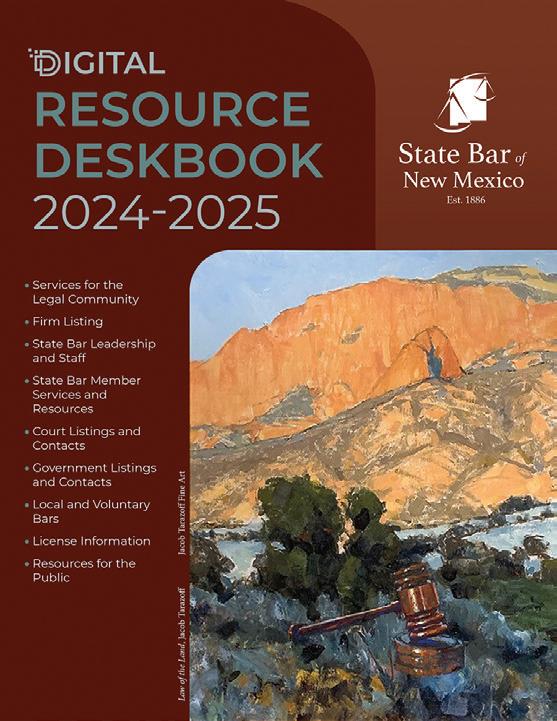
View & Download your FREE digital copy at www.sbnm.org/Resource-Deskbook-2024-2025!
All active State Bar of New Mexico members were emailed a FREE digital copy of the Resource Deskbook 2024-2025 as a member benefit on March 1.
View and download the comprehensive guide for State Bar of New Mexico resources for our members, New Mexico State and Federal Court contact information, License Renewal information and much more at www.sbnm.org/Resource-Deskbook-2024-2025!
The convenient downloadable digital format will allow you to easily click through the sections of the Resource Deskbook to find the information that you need – whether you are working at your desk or on the go!
Please note that the Resource Deskbook will not be printed and mailed this year.
¨ Does your firm, business, or organization want to be part of an ABA Awarded program?
¨ Do you want to help ignite first year law student’s passion in your field of law?
¨ Are you committed to promoting diversity and inclusion through the membership of the State Bar?
If you answered yes to one or all of these questions, then participating in the Arturo Jaramillo Clerkship Program can help accomplish these goals! Arturo L. Jaramillo, the first Hispanic president of the State Bar of New Mexico, developed the Summer Law Clerk Program (“Program”) in 1993 to offer first year law students of diverse backgrounds the opportunity to clerk in legal settings that provide a foundation for the students’ law careers and to promote equal employment opportunities for persons who have historically been underrepresented in the legal profession. The Program creates employment opportunities in law firms, governmental agencies, and nonprofits in New Mexico by providing a summer law clerk experience for motivated and deserving law students who meet the program’s eligibility criteria.
To learn more, please contact the organizers of the program!
State Bar of New Mexico
From the State Bar of New Mexico’s Ethics Advisory Committee
FORMAL OPINION: 2024- 004
TOPIC: Using Generative Artificial Intelligence in the Practice of Law
RULES IMPLICATED: Rules 16-101, 16-103, 16-104, 16-105, 16-106, 16109, 16-303, 16-501, 16-503, 16-804(C), NMRA (2024).
DATE ISSUED: September 24, 2024
DISCLAIMER FOR FORMAL OPIN-
IONS: The Ethics Advisory Committee of the State Bar of New Mexico (“Committee”) is constituted for the purpose of advising lawyers on the application of the New Mexico Rules of Professional Conduct in effect at the time the opinion is issued (“Rules”). One way in which the Committee attempts to advise lawyers is through “formal opinions,” which are published. In issuing formal opinions, the conclusions are based upon any facts that are referenced in the opinion. Lawyers are cautioned that should the Rules subsequently be revised, or different facts be presented, a different conclusion may be appropriate. The Committee does not opine on matters of substantive law although concerns regarding substantive law are sometimes raised in the opinions. The Committee’s opinions are advisory only, and are not binding on lawyers, the disciplinary board, or any tribunal. The statements expressed in this opinion are the consensus of the Committee members who considered the question(s) presented, based upon the Rules in effect on the date issued.
QUESTION PRESENTED
May a lawyer use Generative Artificial Intelligence in the practice of law?
SUMMARY ANSWER
Under the New Mexico Rules of Professional Conduct, yes, they may; however, use of such technology raises a number of considerations which are highlighted here.
ANALYSIS:
Merriam-Webster Dictionary defines artificial intelligence (“AI”) as “the capability of computer systems or algorithms to imitate intelligent human behavior.”1 AI has been used for many years in the practice of law, primarily in legal research and document as-
sembly. More recently, however, Generative AI has advanced and offers the potential to automate various legal tasks. Generative AI differs from non-generative AI that lawyers have historically used in that Generative AI is capable of generating content. This latter capability includes the ability to generate correspondence, retention agreements, briefs, contracts, case summaries, estate planning documents, and a host of other legal documents. Likewise, Generative AI can analyze data and records, legal documents, search for relevant precedent, and suggest edits to existing materials.
The Committee is of the opinion that the responsible use of Generative AI is consistent with lawyers’ duties of competence (Rule 16-101, NMRA), diligence (Rule 16103, NMRA) and charging reasonable fees and costs to clients (Rule 16-105, NMRA). Indeed, Comment 9 to Rule 16-101 NMRA (competence) specifically provides that “[t]o maintain the requisite knowledge and skill, a lawyer should keep abreast of changes in the law and its practice, including the benefits and risks associated with relevant technology . . .” (emphasis added). Generative AI has several potential benefits for lawyers and clients. For example, Generative AI has the potential to make a lawyer’s initial drafting of legal documents, or the preparation of routine correspondence more efficient and, therefore, more cost effective for clients. Likewise, Generative AI can assist a lawyer in considering alternative approaches to drafting complex contracts or cross-examining witnesses. Further, Generative AI can streamline discovery for lawyers, resulting in time and cost savings.
The Committee is not suggesting that, currently, lawyers must use Generative AI in the practice of law. For those lawyers who choose to do so, however, they must do so responsibly, recognizing that the use of Generative AI does not change their fundamental duties under the Rules of Professional Conduct. This means, among other things, that lawyers must tailor their use of Generative AI to fit: (a) their own legal practice; (b) each specific matter in which it is used; and (c) each individual client for whose matter it is used. Moreover, the lawyer should determine whether, in certain matters, the lawyer must discuss the use of Generative AI 1 https://www.merriam-webster.com/dictionary/artificial%20intelligence
with a client, consistent with a lawyer’s duty to reasonably consult with clients about the means by which the client’s objectives will be pursued, pursuant to Rule 16-104(A)(2). Further, the lawyer must be familiar with any rules of procedure, including local rules, as well as any court, agency, or administrative bodies’ rules, policies, or procedures concerning the use of Generative AI, including whether it is allowed and what level of disclosure is required if it is used. The Committee urges lawyers who decide to use Generative AI to do so only after they have taken into consideration the foregoing items, but also the additional considerations set forth in the remainder of this opinion.
The Committee believes that the following Rules of Professional Conduct are most commonly implicated by the use of Generative AI in the practice of law: (1) confidentiality of information (Rule 16-106); (2) candor toward the tribunal and truthfulness (Rules 16-303 and 804-(C)); (3) reasonable fees and costs (Rule 16-105); (4) conflicts of interest involving former clients (Rule 16-109); and (5) supervision of lawyers and legal staff (Rules 16-501 and 503). The Committee also reminds every prudent lawyer to consider whether a lawyer must discuss the use of Generative AI with a client, consistent with Rule 16-104, in certain matters as discussed more fully, below.
The following addresses the commonly implicated Rules of Professional Conduct in numerical order for ease of reference:
of Information, Rule 16-106 NMRA:
The use of Generative AI tools in the practice of law, like prior technological innovations, poses risks to client confidentiality. First, many Generative AI tools are owned by third party providers with varying degrees of security and policies regarding sharing data. Second, they may require a lawyer to prompt them with specific information about a case to generate the legal product sought by the lawyer. Finally,
many Generative AI tools are self-learning and therefore keep and use the information with which they are prompted to train the AI for future users. Thus, the use of these tools in the representation of a client squarely implicates client confidentiality under Rule 16-106.
“A fundamental principle in the client lawyer relationship is that, in the absence of the client’s informed consent, the lawyer must not reveal information relating to the representation.” Rule 16-106 comm. cmt. 4. This prohibition applies to both direct disclosures of protected information and “disclosures by a lawyer that do not in themselves reveal protected information but could reasonably lead to the discovery of such information by a third person.” Id. at comm. cmt. 6. In order to prevent such disclosures a lawyer must not only limit directly sharing such information but must actively “make reasonable efforts to prevent the inadvertent... disclosure of, or the unauthorized access to, information relating to the representation of a client.” Rule 16-106(C).
Thus, Rule 16-106 requires that lawyers take active and well-informed steps to prevent the breach of client confidentiality when using Generative AI tools. First, lawyers must adequately understand the parameters and policies of the Generative AI tools they are using. The lawyer should determine whether the tool they intend to use shares data with third parties, stores and uses data for the purpose of training its own AI, and whether the program has adequate security to prevent inputted information from being unintentionally accessed. Second, lawyers must refrain from inputting any confidential information or information that could lead to the discovery of confidential information into Generative AI tools that lack adequate confidentiality and security protections. This includes Generative AI tools that share inputted information with third parties or keep inputted information to train their AIs. Third, lawyers should always anonymize client information and refrain from inputting details that could lead to the discovery of the client’s identity into Generative AI tools. Fourth, in appropriate cases lawyers should obtain a client’s informed consent before inputting confidential information into a Generative AI tool.
II. Candor toward the tribunal, Rule 16303 NMRA and Truthfulness, Rule 16-804(C) NMRA:
The use of Generative AI tools in drafting documents filed with the courts directly implicates a lawyer’s duty of candor to the tribunal and truthfulness. As stated above, Generative AI tools can create inaccurate or false outputs either caused by AI hallucinations or by incomplete and careless prompts by the attorney using the tool. Due to the risks of AI hallucinations or inaccurate results, a lawyer must pay particular care to their duty of candor toward the tribunal under Rule 16-303 and their duty to avoid conduct involving dishonesty or deceit under Rule 16-804(C) when using Generative AI tools to draft documents filed with a court.
Rule 16-303(A)(1) states that a lawyer shall not knowingly “make a false statement of fact or law to a tribunal or fail to correct a false statement of material fact or law previously made to the tribunal by the lawyer.” This rule recognizes the “special duties of lawyers as officers of the court to avoid conduct that undermines the integrity of the adjudicative process.” Rule 16-303 comm. cmt. 2. This means that a “lawyer must not allow the tribunal to be misled by false statements of law or fact or evidence that the lawyer knows to be false.” Id. As such, under the purview of this rule a lawyer must not only “recognize the existence of pertinent legal authorities,” but avoid “[l]egal argument based on a knowingly false representation of law.” Id. at comm. cmt. 4. Furthermore, under Rule 16-804(C) “[i]t is professional misconduct for a lawyer to: . . . engage in conduct involving dishonesty, fraud, deceit or misrepresentation.”
Thus, when using Generative AI tools to draft documents submitted to a court, a lawyer must independently verify the accuracy and sufficiency of all research, citations, and analysis conducted by the AI tool. In doing so, the lawyer must not entirely rely on the Generative AI tool used to draft the document in the first place to verify the accuracy of its research or analysis. Such methods have been shown to be ineffective at catching mistakes made by the Generative AI tool as such tools can be misled by their own prior hallucination. See, e.g., Mata v. Avianca, Inc., 678 F. Supp. 3d 443, 458 (S.D.N.Y. 2023) (discussing a lawyer’s use of Generative AI to draft a document and the lawyer’s failure
to independently verify the accuracy and existence of the sources cited by the tool used). Moreover, a lawyer must correct any errors or mistakes made by the tool. Failure to do so is a knowing misrepresentation of the law and a violation of, among other rules, the lawyer’s duty of candor to the court and the lawyer’s duty to avoid engaging in dishonesty or misrepresentation. Finally, a lawyer should research and abide by the rules, orders, or other requirements in the relevant jurisdiction pertaining to the use and disclosure of Generative AI tools. Many courts are implementing such requirements to avoid the potential risk of missing or being tricked by AI hallucinations, see N.Y. State Bar Ass’n, Rep. & Recommendations of the New York State Bar Ass’n Task Force on A.I., 2024 WL 1655076, *27-29 (Apr. 6, 2024), and abiding by such prophylactic measures also falls under a lawyer’s duty of candor to the court.
III. Reasonable fees and costs, Rule 16105 NMRA:
Using Generative AI tools in the representation of a client also implicates the reasonableness of the fees and costs for which a lawyer charges a client. Generative AI has the potential to render both the research and drafting of legal documents and the preparation for legal proceedings more efficient. This affects the time and labor involved in the representation of clients and therefore directly implicates what constitutes reasonable fees and costs for such representation under Rule 16-105.
Rule 16-105(A) states that “lawyer shall not make an agreement for, charge or collect an unreasonable fee or an unreasonable amount for expenses.” One of the factors considered in determining the reasonableness of fees charged to the client is “the time and labor required . . . and the skill requisite to perform the legal service properly.” Rule 16-105(A)(1). Moreover, although a lawyer may seek reimbursement for costs incurred, the costs must either be agreed to by the client in advance of representation or reasonably reflect the costs actually incurred by the lawyer during the representation. Id. at comm. cmt.
1. Lawyers must provide clients “at least a simple memorandum or copy of the lawyer’s customary fee arrangements that states the scope of the legal representation to be provided, the basis, rate, or total
amount of the fee, and whether, and to what extent, the client will be responsible for any costs, expenses, or disbursements in the course of the representation.” Id. at comm. cmt. 2. A detailed engagement letter specifying these matters is best practices and “reduces the possibility of misunderstanding.” Id.
Therefore, when using Generative AI tools in the representation of a client a lawyer must be conscientious of the actual time spent on a given task and only charge the client for the time and labor actually incurred. If this means that a task is rendered more efficient by using the Generative AI tool employed, the lawyer must only use the time the lawyer actually spent on the given task to calculate their fee and not include the time saved by the use of the tool. If the lawyer incurs costs for using the Generative AI tool employed, the lawyer may seek reimbursement of the cost from the client but must inform the client of the actual cost incurred from using the tool in writing and the lawyer’s intent to charge the client that cost prior to the representation.
IV. Conflicts of interest – duty to former clients, Rule 16-109 NMRA:
The use of Generative AI tools also potentially implicates the rules of professional conduct regarding conflicts of interest. Although a lawyer should be conscientious of how their use of Generative AI implicates all potential conflicts of interest, we believe the most prevalent risk regarding conflicts of interest when using Generative AI tools implicate a lawyer’s duty to former clients. As stated above, Generative AI tools often require fact-intensive prompts in order to generate the work product the lawyer seeks. Since such tools often store and use prior prompts and outputs to train and improve the Generative AI tool there is a risk that future outputs may use information relating to the prior representation or concurrent representation by another lawyer in the same firm in a way that disadvantages the prior/ other client. Therefore, the use of Generative AI tools directly implicates Rule 16-109.
Rule 16-109(C)(1), (2) prohibit “[a] lawyer who has formerly represented a client in a matter or whose present or former firm has formerly represented a client in a matter shall not thereafter” disclose or use information related to a former client to that client’s disadvantage. See also Rule 16-109 comm. cmt 8. This is because even after the termination of a client-lawyer relationship the lawyer owes a duty of loyalty and confidentiality to the prior client. Rule 16-109 comm. cmt. 1.
Thus, when using Generative AI tools in the representation of a client, a lawyer must be aware of whether the tool stores and uses prior inputs to train the AI tool and what prior client information has been inputted into the AI tool. If the AI tool used by the lawyer or firm does not possess the appropriate safeguards to protect prior client information and to screen potential conflicts the lawyer must verify independently that no conflict exists with prior client information inputted into the AI. If the lawyer cannot independently verify a lack of conflict, then the lawyer should not use the tool for their current representation. Moreover, lawyers should avoid inputting into the Generative AI tools they use confidential client information that could create or cause a conflict of interest with either their own future clients or their firm’s other clients.
V. Supervision of Lawyers and Legal Staff, Rules 16-501 and 503 NMRA:
Lawyers who are partners in a law firm, or who possess managerial authority in a law firm are required to make reasonable efforts to ensure that the firm has in effect measures giving reasonable assurance that all lawyers in the firm and all nonlawyer assistants in the firm conform to the Rules of Professional Conduct. Rules 16-501, 503 NMRA. This includes having appropriate internal policies and procedures in place and providing instruction and supervision to subordinate lawyers and staff. Rule 16-501 comm. cmt 2; Rule 16-503 comm. cmt 2. Thus, prior to using Generative AI, lawyers must develop appropriate policies and procedures on the ethical use of Generative AI and train all other lawyers and staff in the law firm on such policies and procedures. Moreover, lawyers should periodically review compliance with these policies and procedures by
other lawyers and by staff in the law firm. Failure to take such steps could expose a lawyer to liability for the misuse of Generative AI in violation of the Rules of Professional Conduct by other lawyers or legal staff in the lawyer’s law firm.
In addition to the Rules of Professional Conduct noted above, the Committee reminds lawyers considering use of Generative AI to also consider whether the particular circumstances applicable to the client or matter implicate the lawyer’s duty of communication under Rule 16-104, NMRA.
The use of Generative AI in the representation of a client can offer the client certain benefits, but also poses unique risks, as discussed above. Whether a lawyer must discuss these risks and benefits with a client consistent with Rule 16-104 and a lawyer’s duty to reasonably consult with a client about the means by which the client’s objectives are to be accomplished, depends upon a number of factors. While it is not possible to identify or illustrate every situation requiring a lawyer to advise a client about the lawyer’s use of Generative AI, lawyers should be cognizant of the fact that they may need to discuss their use of Generative AI with a client if: (a) the use of Generative AI plays a significant role in producing final products for clients; (b) a client inquires about a lawyer’s use of Generative AI; or (c) the use of Generative AI requires the lawyer to disclose confidential client data to obtain any resulting product. There may be other circumstances in which a lawyer must inform the client about the lawyer’s use of Generative AI and a lawyer should evaluate each matter on a caseby-case basis to determine whether Rule 16-104 is implicated by the lawyer’s use of Generative AI.
In summary, while a lawyer licensed in New Mexico may use Generative Artificial Intelligence in the practice of law, if they choose to do so they must do so responsibly and they must fully adhere the ethical standards of both the New Mexico Rules of Professional Conduct, and any tribunal or agency rules, policies, procedures or orders.

The Bar Bulletin isn’t just a place for information; it’s a hub for discourse and perspectives on timely and relevant legal topics and cases! From A.I. and technology to family law and pro bono representation, we welcome you to send in articles on a variety of issues pertaining to New Mexico’s legal community and beyond!
By publishing your work in the Bar Bulletin, you will:
• Increase your law firm or organization’s visibility
• Have your article read by over 8,000 State Bar of New Mexico members
• Get a FREE shoutout on social media for your published submissions
• Gain recognition by your colleagues and peers for your contributions to the State Bar of New Mexico’s official publication
For information on submission guidelines and how to submit your articles, please visit www.sbnm.org/submitarticle.
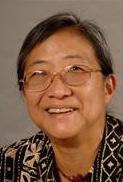
Susan Tomita moved on to her next adventure upon passing on October 25, 2024. Not surprisingly she approached this transition with the utmost strength and grace and faith. She was born January 10, 1954 to Kazuo and Helen Tomita. Her professional credentials were exemplary having completed college at Stanford University and Santa Clara University School of Law. After clerking for the California Court of Appeals, Susan immediately embarked upon a life of service working for the National Indian Youth Council and then as an associate and then partner with Luebben, Hughes, Tomita and Borg practicing Indian Law. She then focused on Elder Law as a shareholder with Tomita & Simpson and in her solo practice. Her professional accolades are many including former Chairperson of the Elder Law Section of the NM Bar Association, the NM Bar Association Committee on the Delivery of Legal Services to Persons with Disabilities, a member of the Special Needs Alliance, the National Academy of Elder Law Attorneys, and the NM Estate Planning Council. Susan was on the Board of Directors of the Legal Aid Society and the Indian Pueblo Legal Services and she served as Chairperson of the Indian Law Section of the NM Bar Association. She is a co-author of the Handbook for Guardians and Conservators and Alternatives to Guardianships and Conservatorships. She is listed in Best Lawyers in America in practice areas Trusts and Estates and Elder Law, in Martindale Hubbell’s Directory of Preeminent Attorneys and was named by Best Lawyers as Lawyer of the Year for 2015 for Elder Law and 2016 for Trusts and Estates. As remarkable as her professional career was, Susan was equally devoted to her work within the Catholic church. She was a member of the Parish of St. Joseph’s on the Rio Grande and served three terms on the Pastoral Council. She also worked in the Ministry of Loaves and Fish and St. Vincent de Paul. She was a frequent facilitator for programs in Faith and Engaging Spirituality. She served on several committees for the Archdiocese including the Archdiocese Campaign for Human Development Local Advisory Committee. She was a pilot member of the Just Faith program and served as a program facilitator for that program’s Crossing Borders, Faith and Immigration Justice. She served in the Shrine of St. Bernadette’s Social Concerns Ministry and most recently served on the Archdiocese Social Concerns Ministry with the Justice, Peace and Life Commission. She received the Archdiocese of Santa Fe’s St. Francis award in 2006 and the Bernadette Institute’s Mother Teresa Award in 2005. Susan connected with her Native religion as well on her spiritual journey participating in Native sweat lodge ceremonies and studying and following the teachings of Native leaders such as Black Elk. Consistent with her strong conviction that faith called upon her to serve those less fortunate, she was selfless in her commitment to organizations that served those less fortunate. She served on the Board of Directors and as President of St. Joseph’s Community Health and in that role was instrumental in the passage of the NM Constitutional Amendment making early childhood education a constitutional right. She also served on the boards of the Alzheimer’s Association and Friends in Time and worked with Francis House and Casa de Communidad providing leadership, legal services, and street outreach. She was co-founder of Crossroads for Women serving women with co-occurring mental health and substance disorders in the criminal justice system and their children. Susan’s professional and charitable activities are an
inspiration to us all. But to her friends and family, Susan will also be known as a devoted friend, a wonderful story teller, an engaging conversationalist, a source of endless funny stories, a steel trap memory, and a fiercely devoted mom. She was empathetic, caring, ethical, hardworking, unassuming, modest, generous in every way, and welcoming to all. Susan is survived by her son Tony Tomita, her sister, Lisa Oshiro, and her brother Roy Tomita, and a countless number of friends who will miss her dearly. A Rosary will be held on December 10, 2024 at 8:30 am followed by a Funeral Mass at 9:00 am, both at St. Joseph’s on the Rio Grande. A Celebration of Life will be held on January 10, 2025 at 5:00 pm at the Indian Pueblo Cultural Center.
Charles D. “Chuck” Noland, 77, died in Albuquerque on Monday, April 1, 2024. A memorial toast for Chuck will be held at a later date. As a true New Mexican, Chuck usually measured distances as “it’s as far as from Artesia to...,” and he carried his New Mexico drawl wherever he went. Wearing one of his favored plaid, button-down shirts, Chuck enjoyed his reunions with his 1964 Artesia High School classmates and his life-long friends from the University of New Mexico (UNM) and its student newspaper, The Daily Lobo. He knew the antecedents of at least one person in each New Mexico town he visited. Chuck wanted to hear everyone’s story. His desire to hear those stories led Chuck to earn a degree in journalism from UNM in 1973. During his journalism career, Chuck was editor of The Daily Lobo from 1967-68; an off-and-on reporter for the Santa Fe New Mexican and the Associated Press from 1968-1974; and as press secretary for a New Mexico gubernatorial candidate in 1974. Chuck was a Vietnam era veteran, serving in the Army from 1971-72 as a staff writer for Soldiers Magazine. Chuck was a 1978 graduate of the UNM School of Law as well as a talented journalist. As legal counsel for the New Mexico Department of Education, he dedicated himself to ensuring that every child in New Mexico received a quality education. Chuck emphasized the importance of basic reading, writing, and math skills as ways New Mexicans could contribute to their state, culture, and people. Chuck also worked with the families of exceptional children to ensure they, too, had access to an essential education. Chuck continued this work after his retirement. While Chuck was proud of his work with the Department of Education, one of his life highlights was performing at Carnegie Hall with his Santa Fe choir under the baton of director and composer John Rutter. Chuck will be missed by his wife, Elizabeth; his sister, Margaret; his two nephews; and his many friends.
Georgina Radosevich Fowlie, passed away peacefully on June 10, 2024, in Albuquerque, New Mexico. Georgina was a resident of Albuquerque since 1959. She was born in Raton, New Mexico on April 21, 1931, to Joseph and Angelina Radosevich, who immigrated from Croatia to Raton in the early 1900s. Georgina graduated from Raton High School in 1949 and attended the University of New Mexico and Yale University Law School. Georgina was one of New Mexico’s first female attorneys and worked in private practice and for legal aid. She was a unique individual and a complex mix of strength, sensitivity, toughness and love.Georgina is survived by her son Robert Fowlie (Pam), stepdaughter Lea Fowlie, grandchildren Rose Fowlie, Christopher Fowlie, David Fowlie, Patrick Fowlie and Rebecca Lee (Ryan), two great-grandchildren and nieces Gina Kelly (Joe) , Karen Sajbel (Marty) and Scott King (Tammy). She was preceded in death by her husband Gerald, daughter Kate, grandson Alex, her brother Tony, and sisters Mary and Carol. The family will hold a private memorial service in early September. Pocivaj
Steven S Suttle (1949-2024), a former district attorney and assistant attorney general, passed away on February 27 in Albuquerque, leaving behind his loving wife of 49 years, Denise, his daughter Tovah Close and her husband Bryan, two wonderful grandsons, Asher and Jonah, and his brother Hal Jack. Steven had many avocations, but especially enjoyed his thirteen years on the air at Big 98.5 radio, stand-up comedy, and community theater. His love of family, New Mexico, and constitutional government knew no bounds. In keeping with Jewish tradition, in lieu of flowers please commit a random act of kindness. Suggested charities are the Navajo Water Project (navajowaterproject. org) and Animal Humane New Mexico (animalhumanenm.org).
Thomas Charles Esquibel passed away at the age of 73 in San Jose, Calif., on Nov. 28, 2023, on a bright, sunny morning surrounded by his beloved family after a courageous battle with cancer. Tom was born Sept. 17, 1950, to Ezequiel and Emma Esquibel, and had six brothers, Ezekiel, Frank, Joe, Edwin, Donald and John. As a child, he attended St. Mary’s Catholic School in Belen. There, he learned to speak English in school with Catholic nuns as his teachers. He has described this education and experience as formative in his life and giving him a drive to achieve and persevere beyond people’s expectations of him. Tom was outgoing and intelligent throughout his life. He truly loved life and people. He attended the University of New Mexico and became an attorney in 1975. In 1980, at the age of 30, he won a campaign to become the youngest district attorney in the history of the country. His cases varied from divorce law to criminal law. He was a very talented attorney and most people in the small towns he and his family were from knew of him and would often call on him when they needed legal advice or help. Tom was proudest of his family — his children and grandchildren. He was selfless in his love and care. If there was any way to help anyone, he would be there in an instant. His grandchildren would describe him as very silly and willing to play, listen, cook or drive them anywhere they needed at a moment’s notice. He will be greatly missed by family and friends near and far. Thomas is survived by his three children, Franchesca Perez, Carlos Esquibel and Eric Esquibel; his grandchildren, Emma Perez, Hector Esquibel, Keona Perez, Brandon Esquibel and Jayda Esquibel; brothers, Frank Esquibel (Mary Rita), Joe Esquibel (Peggy) and John Esquibel (Ruby); sisters-in-law, Kathy Esquibel and Alice Esquibel; and many lifelong friends and extended family. Thomas was preceded in death by his loving parents, Ezequiel and Emma Esquibel; and his brothers, Ezekiel (Alice), Edwin (Kathy) and Donald.
Jetulio Victor Pongetti, Jr., age 95, also known as “Vic,” “Junior,” “J. Victor,” and “Gramps,” passed away peacefully on January 17, 2024, surrounded by family. Vic was born on October 23, 1928, in Shelby, MS, into an Italian immigrant family, who were sharecroppers. He was the 2nd of 9 children of Jetulio Victor, Sr., and Amelia (nee Avaltroni) Pongetti. As a child he worked on the farm with his father and grandfather, Adamo. For the rest of his life, he described himself as “a sharecropper’s kid from Mississippi.” After high school, he attended Mississippi State University, graduating in 1950 with a degree in Agriculture Engineering. As a pilot in the US Navy, he flew the Cougar aircraft off the deck of the Midway Aircraft Carrier and made some of the best friends of his life in his Hellraisers squadron. After finishing his commission in the Navy, he served in the Reserves and went to Vanderbilt Law School. A good friend from law school suggested that he practice law in Albuquerque, NM, where he became the law clerk for the Supreme Court Chief Justice, James M. McGee. Subsequently, he worked for the Bellamah Corporation, became a partner at the Johnson and Lanphere Law Offices, and built the firm
Pongetti, Wilson and Pryor. As a prominent real estate attorney, he worked on many negotiations, including the Taylor Ranch Subdivision. In 1990, he pursued a Master’s Degree in Counseling at the University of New Mexico, after which he maintained his own law practice with several long-term clients, until retiring at the age of 88 from the “law business,” as he would say. In 1963, he married Lou Delle Fidel, and they had one daughter, Gina. Although they divorced, they had a kind and respectful relationship. In 1987, he met Rita Heidinger while serving on the St Joseph’s Foundation Board. They were married in a surprise wedding ceremony in 1992. They enjoyed hiking the Grand Canyon, traveling to Italy to visit family, gardening, making gingerbread houses with their grandchildren and extravagant gingerbread houses including a model of St. Basil’s Cathedral with his friends, cooking delicious meals with the “food group,” watching football with friends and spending time with their grandchildren. He was generous with his time and finances. He has served on the Board of Directors for All-Faith’s Receiving Home, the Board of Directors for St. Joseph’s Foundation, and facilitated Beginning Experience weekends to help those in the healing process after divorce. He was a moral man throughout his life and in his later years he trusted in Jesus as Lord. He enjoyed gardening, making Easter bread and delivering it hot to friends and family, cooking and the importance of eating food when it’s hot, calculating the right balance of cake and ice cream on his plate, and watching his grandkids compete in anything - never missing a game or performance. He was a patriot to the core and felt that anything was possible in America. He was described by one of his Italian relatives as “a man of great humanity, of good will at all times, an example of commitment towards everyone and also towards those, like us, who lived far from him. It was so wonderful to see his care, interest and pride regarding his relatives, his origins and his Italian roots.” Indeed, his commitment to his family extended across the country and around the world, but his home was always the center of Pongetti family life. Vic hosted many family reunions, holiday gatherings, and family members and friends in need. Vic was preceded in death by his parents, Jetulio Victor, Sr., and Amelia Pongetti; his brothers, Charles Pongetti, Anthony Pongetti, Robert Gene (Bob) Pongetti, Adam Pongetti, and Raymond Pongetti; his sisters, Elizabeth Pringle and Lillian Pongetti; and a sister-in-law, Vicki Bachechi. Vic is survived by his wife, Rita Pongetti; his daughter and son-in-law, Gina and Sandy Beauchamp; their children, Ben (Abigail), Emma, and Luke (Alexandria); his great-grandson, Desmond; Rita’s daughter and son-in-law, Shannon and Jeff Adragna and their children, Nicolas, and Mathew; Rita’s daughter, Pamela Heidinger, and her sons, Dennis Chavez II and Grant Chavez; his sister, Delores Pongetti; sisters-in-law: Mitzi Pongetti and Dorothea Pongetti; and many beloved nieces, nephews, grand-nieces, and grand-nephews. He is also survived by a host of wonderful family in Italy, friends and colleagues.
Harold Folley Jr. died peacefully at home on his 89th birthday January 11, 2024, in Albuq., NM. As a cub scout visiting the Lincoln memorial in his birthplace Springfield, Illinois, Harold had the opportunity to shake the hand of an old man who had shaken the hand of Abraham Lincoln. This event had an impact on his life. Harold had an exciting career in Law. His first job was with the Indiana Attorney General’s office. Ironically, one of his cases resulted in the establishment of the Lincoln Boyhood National Memorial in Lincoln City, Indiana. His next job was with the prestigious law firm in Indianapolis, Krieg, DeVault, Alexader and Capehart. Double irony. The firm was engaged by the State to defend the establishment of the Lincoln Boyhood National Memorial before the United States Supreme Court. Because of his Type 1 diabetes, the firm could not provide desired benefits. His next Career move was with Indiana Bell who provided the benefits. He could tell many stories involving Yellow Pages ads. While attending a Bell Telephone system conference, he met legal staff from Sandia National Laboratories who at that time were managed by AT&T under contract to the Department of Energy. The idea of being close to skiing made the idea of a transfer to Sandia very appealing and Harold jumped at the chance to make his final career move. Although involved in many interesting cases, he was most proud of the work he did with medical Director Larry Clevenger to abolish smoking in the workplace. Harold was an avid squash player and skier. His retirement years gave him the opportunity to enjoy docent opportunities at the NM Natural History Museum and the New Mexico Holocaust and Intolerance Museum, as well as indulge in adventure travel and attend classes at Oasis — Lifelong Adventure. He relished writing philosophical essays on subjects that reflected his deep thinking. Harold discovered the reward of being Philanthropic, making an impact on our community. Harold treasured his 36-year marriage to Jennie Negin. Through their relationship, he was inspired by Judaic teachings and became a respected member of the Jewish community. Harold was preceded in death by son Bradley Lindsey Folley, former wife Sandra Folley, parents Harold Lindsey Folley and Charlotte Auld. Survivors of Harold (aka “Gruncle”) include his son Scott Folley (Sue), grandchildren Matthew, Emilyn Simone (Danny) and Nicholas, and great-grandsons Dominic, Salvatore and Leonardo Simone. Harold was like a father to Jennie’s daughter Rachel (Steve) Galper, grandchildren Marlee and Nathan Galper, and son Neil Boring.
Rory Lane Rank, age 70, of Las Cruces, passed away on March 10, 2024. Rory was born in Cleveland, Ohio to Robert and Lois Rank on November 7, 1953. He graduated from Adrian College and received his Juris Doctorate from Widener College. He worked as an attorney for over 30 years. He primarily worked as a Public Defender and supervised the Juvenile Division in Las Cruces. After retiring from the Public Defender, Rory was an adjunct professor at New Mexico State University and other local community colleges. Rory was a veteran and served in the Air Force and was awarded the USFA Commendation Medal, USFA Meritorious Service Medal, USAF Commendation Medal (First Oak Leaf Cluster). Rory helped to develop the Juvenile Drug Court in Dona Ana County and it was designated one of six mentor sites in the nation. He also served on a number of boards and volunteered in the community. He served on the Youth Violence Initiative, Youth-at-Risk Programs/ JARC board, NM Juvenile Justice Strategic Plan for Girls board, Task Force: Youth Violence Initiative, Youth Advocates Alliance Board, Juvenile Detention Alternative Initiative and Gang Awareness Task Force, Disproportionate Minority Representation, Dona County Juvenile Justice Advisory Board, Dona Ana County Juvenile Detention Center Design/ Building Project,
JARC, Continuum Board, Veterans Treatment Court Team. Rory also received the 2009 Driscoll Award from the Public Defender’s Office. In 2005, he received the Carlos Vigil Award from the NMPD department as attorney of the year, and in 2004, he received the humanitarian award from the Las Cruces Hispano Chamber of Commerce, in 2016 was New Mexico State University Department of Criminal Justice Starry Night Nominee. Rory is survived by his Children: daughter Haley Manaia Rank, son Niclaus Makusia Rank, and daughter-in-law Amanda Rank, Siblings: Brothers Kim Rank, Kyle Rank, and Sister Lora Ehle, Grandchildren: Makuisa Brandon Rank, and Leighanne Christa Munoz.
David Rask, born March 2, 1930 in Minneapolis MN to Peter and Ella (Johnson) Rask, died at 93 on October 20, 2023 at home in Albuquerque. He is survived by his sons John, Dan and Will, all of the Albuquerque area, and two grandsons, Quinn and Galen. Peter loved his family, duck hunting, classical music, a good pair of shoes (“I’d wear them to bed if I could”), golf and driving long distances across the US. Later in life he became a great reader of history, philosophy and the occasional novel. Peter grew up in south Minneapolis and studied at the U. of Minnesota, earning his law degree. While he was in law school, his National Guard unit was activated during the Korean War. He married Mary Helen Slaughter of Bayport, MN in 1953. Peter worked as a state tax auditor, then found his niche as an assistant city attorney in Duluth, MN and Albuquerque. After 3 years with the Federal Aviation Administration, in 1974 he returned to law practice as the first general counsel for the Univ. of New Mexico. Mary died at only 52 years old in 1983, leaving a deep void. Peter retired from the Albuquerque City Attorney’s office in 1988. He reconnected with Gretchen Letson at his 40th high school reunion and when they were married in 1992 he joined her in Dana Point, CA where they lived until her death in 2014. He spent his years since then in Albuquerque, much of that time as a member of the La Vida Llena elder community, where he was deeply grateful for all those who visited and cared for him.
Sigmund Lample Bloom, long resident of Albuquerque, NM, passed away on October 6th, 2022. Sigmund was born in Washington, PA, and a resident of Albuquerque for most of his life. He lived the last year of his life living in NYC with his daughter and grandson. Sigmund was a loving husband and an inspiration to his family and all who knew him. His sense of humor was enjoyed by all, and whoever met him was enamored with his charisma and personality. He thoroughly enjoyed all of the Pittsburgh team sports and supported all of them, all of the time. He had many names that he lived up to with great honor and pride, but most of all, husband to his wife, Marcia. Sigmund was an excellent criminal defense attorney who cared deeply for his clients and for 54 years practiced a style of law that sadly no longer exists. He was preceded in death by his father Israel Bloom, his mother Ida Lample Bloom and his loving wife, Marcia. He is survived by son Sigmund M. Bloom and wife Kate of New Orleans, LA and daughter Lori Bloom and partner Alfredo of New York City, NY and three grandsons. He is also survived by one sister, Carole Sue Kaminsky and one brother Charles J. Bloom and wife Susan. Sigmund’s family thanks all those who touched his life and who were a part of it. If you had the privilege to know him, you knew that he loved life very much. He will be greatly missed. According to Sigmund’s wishes, he was cremated and a Celebration of Life Service will be held at a later date. In lieu of flowers, please make a donation in his memory to your local Animal Humane Association.
David L. Norvell lived a wonderful life. A brilliant man with a brilliant smile, Dave loved his family, all children, especially babies and toddlers dogs, politics, the law, cooking, playing and watching both tennis and golf, and piloting his own plane. He graduated from the University of Oklahoma School of Law, and was a lifelong Boomer Sooner fan. Dave approached all challenges with optimism, confidence, and good humor. He was generous in every sense of the word, from taking time for his children and grandchildren, to making time to mentor new attorneys or advise political hopefuls. As a young State Representative, who served as Majority Leader in his third term and the youngest Speaker ever in his fourth and final term, Norvell was clearly a legislative visionary. He led fights against capital punishment, for higher minimum wages, for a public employee collective bargaining act, for civil rights legislation and court reform. Speaker Norvell was a prime sponsor of the Human Rights Act, creating a commission with enforcement powers. He not only fought to maintain a clean environment, he opposed tax cuts that would have threatened public educational funding. Norvell was often quoted as saying he did what he thought best for the people of New Mexico, rather than weighing his re-election chances. He liked to relate that when FDR was running for a second term, supporters greeted the President at Madison Square Garden with a huge sign that read, “We Love Him for the Enemies He Has Made.” Speaker Norvell observed, “Well, I have made some good enemies lately, and I find it a rather agreeable experience.” In 1970, Norvell ran successfully for Attorney General and distinguished himself in that role. He joined with a number of other states’ Attorneys General to oppose the Viet Nam war, hired a record number of women as Assistant AGs. and issued many consequential opinions, such as the protection of the rights of students in public education to speak in their Native languages on campus and for state workers to bargain collectively. Norvell failed in his bid to secure the Democratic nomination for the US Senate in 1972, and, at the end of his term as AG in 1975, decided not to run again for public office. Dave then began a successful private law practice in Santa Fe, then Albuquerque, representing criminal defendants, plaintiffs with civil rights claims, and patients injured by medical negligence. Dave became a skilled pilot when he flew between Clovis and Santa Fe as a legislator, and often flew all over New Mexico to appear in court, as well to CA to appear before the 9th Circuit Court of Appeals. Ultimately, Dave managed to make good colleagues of former adversaries, such as the late Governor David Cargo with whom Norvell sparred while Speaker of the House. Cargo was a guest at the reception following Norvell’s marriage to Gail Chasey in October, 2003 in Pendaries, NM, along with the late Governor Richardson. Dave and Gail met during the late Bill Richardson’s campaign for Governor in 2002. Dave had helped Richardson organize a joint caucus of House and Senate Democrats in Pendaries in northern NM after Richardson had secured the nomination. A close family friend, Barbara Gay, arranged for Dave and Gail, then running for her 4th term in the NM House, to meet. They married a year later. Dave enjoyed having that close connection with the NM Legislature again. When Gail was elected House Majority Floor Leader in 2022, Dave reminded her that he had held the same position. She joked that, while Dave was likely the youngest ever to hold that position, she is likely the oldest to do so. Dave has enjoyed supporting many of Gail’s legislative priorities, particularly her 10-year effort to repeal the death penalty, which succeeded in 2009. They joined the late Governor Richardson and the late Archbishop Sheehan in a trip to Rome (at their own expense), where the Community of Sant’Egidio arranged for a ceremony, at which Saxophonist Branford Marsalis played “Imagine,” as the lights were lit in the Roman Coliseum to celebrate New Mexico’s repeal of
the death penalty. Governor Richardson later appointed Dave to the Gaming Control Board, where he served as Chair until 2013, at which time, he resumed practicing law part-time until he retired in 2016. Always well-informed and fascinated by politics, Dave devoured the New York Times, which has long been delivered to his home daily, regularly read the New Yorker and the NM Bar Bulletin. He rarely missed the national news or important Congressional hearings on TV. To the end, Dave was always kind, gracious, and managed to be the funniest one in the room. The night of the Winter Solstice, he died peacefully at home, surrounded by his loving family and beloved dogs. Born in Kansas City, MO, on January 31, 1935, David was raised in Bartlesville, OK, the only child of Kenneth and Mildred Norvell. He was predeceased by his second child David Jr, who died in 2005, and by the mother of his children, Mary Vivian (Marivee) Trentman Norvell, with whom Dave shared a warm relationship following their divorce in 1991, after 34 years of marriage. David is survived by his four children, Teresa Norvell of San Diego and Las Vegas, NV, Felicia Norvell of Santa Fe, Connie Beers of Las Vegas, NV, and Jack Norvell of Edgewood, and “the older grandchildren,” Hayden Beers, of Las Vegas, NV, Trentman (Trent) Norvell, of Richardson, TX, and Nicole (Nikki) Norvell, of Santa Fe. David was not only a prominent figure in public service to the people of New Mexico but was an amazing presence in the lives of his children and grandchildren. He was witty, loving, and supportive of all their endeavors. They will all fondly remember the times they had, especially wonderful visits to the second home in Pendaries Village where the focus was always on family, togetherness, and enjoying the New Mexico landscape. Other survivors are Dave’s cousin Glenn Norvell and wife LeAnne of San Diego, Dave’s children’s cousins: Dr. Greg Jochems, his wife Mindy, their sons Andy and Lou (ABQ); Ted Jochems and Leonard Jochems, (Wichita, KS), Rita Ann Allessie (MI), and Betsy Barnes (PA). Dave’s wife of 20 years, Gail Chasey, and her family all loved and adored Dave — son Garrett Beam, wife Lindsay, of San Diego; and son Tyler Beam, wife Anna, of Parker, CO; and “the younger grandchildren,” Makena and Kaiyan (CA), Lucy and George (CO) for whom Dave was their “Papa;” Gail’s brothers, Don Chasey and wife Ann of Ashland, OR, niece Niabi Chasey Williams and children Jade Mahalia Scott and Dario Williams of Ft. Mill, S.C. and nephew Colin Chasey of Portland, OR; and Jim Chasey of Idaho, nephew Patrick Flanagan (NZ), Patrick’s mother Margaret Flanagan (NZ), along with the extended families of Gail’s cousins, Kelly Sifferman, Kathy, and Tom Allen (PHX) and Diana, Allen, Mark, and Bob Obrinsky (CA, MD, OR). The family wishes to thank those who provided such loving care to Dave and support to his family Presbyterian Hospice and Sabrina Durr of Visiting Angels. Dave also enjoyed visits and outings with faithful friends John Schoeppner and Julianna Koob. The family thanks countless extended family and friends for their presence or their messages of love and condolences upon learning of Dave’s passing. David Norvell will lie in State at the Capitol Rotunda at noon on January 12, 2024 in Santa Fe. Speaker of the House Javier Martinez will preside, and, following Governor Lujan Grisham, former Democratic Speakers of the House will also offer remarks — Raymond Sanchez, Ken Martinez, and Brian Egolf.
Attorney Douglas “Doug” James Antoon, died unexpectedly on February 2, 2023, after a short illness. He was only 66 years old. His family is deeply saddened and shocked by his sudden death. Douglas was born in Methuen, Massachusetts on October 28, 1956. Doug is survived by his brother Daniel and his wife Debra Antoon of Jensen Beach, Fl., his brother Gregory and his wife Christine of Pennsylvania, his sister-in-law Frances Antoon of Stuart, Fl., several beloved nieces, nephews, great-nieces, great-nephews, and his sweet cats Grace and Mercy. Doug is predeceased by his father Samuel Antoon, his mother Ann Antoon, his brothers Joseph and Dana Antoon, his sister-in-law Gina and his nephew Gregory Douglas Antoon. Doug was educated at Central Catholic High School in Lawrence, Massachusetts, the University of Denver where he received his Bachelor of Arts and at Suffolk University Law School where he received his Juris Doctorate. He was a star debate team member throughout high school and college years and always a Deans list student. He was a seasoned and very wellrespected attorney regardless of where he resided. Doug was known for being incredibly passionate about his work. He most recently was Senior Legal Counsel for Philips Healthcare North America where he made many close connections and had a tremendous impact on the clients he served. Doug loved his volunteer work as a Juvenile Justice System Mentor where he mentored youth from 13 to 21 years old to help them create a path for their future success. Doug was a pillar in his community of Albuquerque, New Mexico where he resided for the last two decades. He was passionate about politics from a very young age and assisted in running campaigns throughout his time not only in New Mexico but also early in his career in Massachusetts making many close friends along the way. He had countless friends we would like to thank for their continued connection over the years; but the family would like to extend a heartfelt special thank you to Gary Gallant who was a rock during Doug’s last days for him and the family. Doug was deeply connected to his congregation and worship team in his ministry “The Way” and was blessed by the close bonds that stayed by his side always praying for him. A special thanks to Terry and the amazing team that assembled to support the family during this difficult time. As a man of faith, Doug would embrace a celebration of the immortality promised to all by Christ. He would love to be remembered with funny, strange, or silly stories that celebrate what was good and blessed in his life.
The community of Cibola County lost a loyal friend, legal advocate and loved one when Bruce Boynton passed away from this earthly life on March 12, 2024, after a long illness. Bruce was born on October 4, 1945, in Rochester, Minnesota to parents Bruce and Sylvia Boynton. After attending Carlton College in Northfield, Minnesota, Bruce went on to earn his Juris Doctorate at Vanderbilt University. After earning his law degree Bruce headed to the Southwest and began his career working for Pueblo Legal Services in Zuni, New Mexico. He eventually went on to open a private practice in Milan, New Mexico where he also served as City Attorney as well as Attorney for the Grants Public Schools and Cibola General Hospital. Bruce was a member of the Ramah Rodeo and a long-time active member of the Rotary Club. In 2020 Bruce celebrated 50 years of law practice and continued helping countless citizens of Cibola County until very recently. His kind heart and wise advice will be greatly missed. As many of his friends know, Bruce was an avid bird watcher and traveled to Central and South America on birder excursions. Among his many passions, Bruce loved fly fishing, cultivating orchids and had a particular love of Latin music, Flamenco, and Latino literature as well. One of Bruce’s favorite quotes (and word of advice) was “Don’t let the truth get in the way of a good story.” He will always be remembered for his quick and dry wit. Bruce is survived by Donna, his wife of 48 years, sons Corey, Steven (April), daughter Tahama (Drew) and Grandson Damian. Bruce’s siblings include beloved brothers, Stan, Doug, Kenny and sisters Sylvia, Mary (Peg), Betsy (Joe) and Kathy (Craig).
Allen Kerpan, age 71, passed away February 28th, 2023 after a long illness. How do I begin to describe this man? He was a crazy, wonderful, loving husband to me for 45 years and an amazing dad to Kyle and Tessa. Together, we survived the death of Kyle from his brain tumor when he was just 11 years old. He served his country for over 30 years as a member of the United States Air Force. He served both stateside and overseas in Keflavik, Iceland, Ramstein, Germany and Doha, Qatar before retiring as a Lieutenant Colonel in 2013. His last assignment was being an Operations Officer managing the design and implementation of an Integrated Air and Missile Defense Course at Hurlburt Field, FL. After his military retirement, he worked as an attorney for the Department of Veteran Affairs in Washington DC handling claims for his fellow veterans. He graduated from Drexel University and the University of Denver Law School. He was an engineer, an attorney, a pilot, a sea captain and the smartest person I have ever known. He loved his music, flying , boating, his Manhattans and he was the love of my life and the best dad anyone could have. As he always used to say to me when I was going anywhere...”Go, run like the wind”... fly high, my Colonel to the open skies that you loved so much...Tessa and I will miss you every second of our lives... Doviđenja my love
Dawn Sturdevant Baum, 46, passed away June 10th, 2023 from complications of metastatic breast cancer. She passed peacefully surrounded by family. Dawn’s light continues to shine to many. Dawn was born to Mary Kay Baum and Michael Sturdevant in Pleasant Springs, WI during the sunrise of July 3rd, 1976. Fittingly, weeks before her birth, Grandmother Nellie Sturdevant had suggested to Mary Kay the name Meep, meaning Dawn. Dawn came to experience life with some of her Menominee relatives. These include her halfsister Michelle Sturdevant who at age 10 lived with Mary Kay for a year. Dawn guided many including Tara Sturdevant, Craig Sturdevant, and Marisa Soto. In addition to having Menominee relations, Dawn was proud to be enrolled in the Sokaogon Chippewa Community – Mole Lake Band of Ojibwe. In 1988 Dawn’s mother Mary Kay married George Swamp. They welcomed Dawn’s brother, Jake Swamp in 1989. George officially adopted Dawn as his daughter on Feb 1, 2019 after serving in that role for many important years. Dawn graduated with honors from Madison East High School in 1994 and graduated from Beloit College with a B.A. in Religious Studies in 1998. She was an active member of the swim teams for both Madison East and Beloit and enjoyed being in and around water for the rest of her life. She began Law School at the University of Colorado and transferred to UW-Madison Law School where she earned her J.D. in 2001. In 2005 she earned the distinguished L.L.M. degree in American Indian and Indigenous Law from the University of Tulsa. While in law school at UW-Madison, Dawn was a Victory Voice in what would become the Lambda Chapter of Alpha Pi Omega Sorority, Inc., the first historically Native American Sorority. Dawn continued her leadership in the Sorority becoming a founding member of the Zeta Pi Professional Chapter and its first president. Dawn served various leadership roles in the Sorority at both the local and national levels becoming a permanent part of Alpha Pi Omega history. Following Law School, Dawn served as Law Clerk for the Supreme Court Chief Justice of the Navajo Nation. She then worked as Legal Assistant to the Clerk of Supreme Court and Court of Appeals of Wisconsin. In 2005, Dawn moved to Washington, DC, where she worked for the renowned Native American Rights Fund. She then worked within the Bureau of Indian Affairs in the Department of the Interior with American Indian and Alaska Native colleges and elementary and secondary schools. Spread out over 64 reservations and 23 states, the officers of these educators were glad to have one person, Dawn, as their go-to staffer. Successful there, she was called to the Office of the Solicitor for the U S Department of the Interior which advises and represents the office in judicial, legislative, ethical and legal matters. If this is not broad enough Dawn took within these 12 years a position in the U. S. Environmental Protection Agency, the National Indian Gaming Commission and US Department of Justice in their Office of Tribal Justice. The latter mandate was to assure that federal agencies uphold Indian sovereignty and consultation requirements. Dawn was elected president of the Native American Bar Association of DC and later was a member of the American Bar Association’s Council for Racial and Ethnic Diversity in Education. A founding member of the American Bar Association’s Joint Task Force on Reversing the School-to-Prison Pipeline, Dawn helped develop the task force’s 2016 report on how to reform and improve education for disenfranchised youth. As she moved to her Yurok position she helped implement more such reforms there. In 2017 Dawn moved to Crescent City, CA and began work for the Yurok Tribe where she would eventually become General Counsel. At the Yurok Tribe she developed a mentorship program for young attorneys and paralegals and inspired several young tribal members to continue their education and develop advocacy skills. Dawn had a gift
for bringing out the best in people. For six years she was Adjunct Professor of Indian Law at University of Tulsa College of Law, teaching Indian education and gaming law classes after work in her “free time.” As part of her work with the Yurok she went to Egypt in November 2022 for the UN Climate Change Conference (COP 27) where she spoke about the importance of using indigenous knowledge with sovereignty in addressing the climate crisis. An important part of her work with the Yurok was Dawn’s speaking up for indigenous peoples around the world at the international UN Climate Change COP 26 in Glasgow, Scotland (COP26) and in Sharm el-Sheikh, Egypt (COP 27). Her words, calling for following indigenous ways, are at https://soundcloud.com/culturalsurvival/dawn-baum-andjavier-kinney-on-climate-change, and https://insideclimatenews.org/ news/15112022/cop27-deforestation-united-states-logging/. In April 2023, she shared this recent episode of The Future as it relates to the Yurok: https://www.youtube.com/watch?v=x3JdV5AVOQg. Dawn found a disconnect between what officials are saying at the COP26 and 27 talks what they’re doing at home. Meanwhile the Yurok are a model for accomplishing much by cooperation and partnering with businesses and governments. “We cannot achieve healthy living without including Native nations and their wise traditional ways. “It’s really wonderful for us to bring our territory, and what used to be our territory, back into our control, to be able to use our traditional knowledge … to prevent the massive wildfires by techniques like burning designated underbrush, keeping the forest healthy,” she said. Clean, free-flowing river that will once again support one of America’s greatest fisheries available for indigenous people and their traditional ways. We’ve done that for millennia and the rest of the world is finally catching onto what we were doing.” Dawn considered herself a strong resilient indigenous woman. She survived a devastating car accident and fought her way back to mobility. She faced her first round against breast cancer in the middle of the pandemic at the height of isolation and uncertainty. She maintained her incredible resilience in the face of struggles large and small and held onto a belief in hope and the possibility of joy.Dawn and Jake shared an incredible bond and she took great joy in his life and friendship. They shared homes in Washington, DC, Crescent City, CA and most recently Green Bay WI, where Dawn said she wanted to be close to family, take time for recreation and nature while continuing her work as General Counsel of the Yurok Tribe in CA. Dawn said she wanted to grow old in this home. Jake is the best brother possible to Dawn. With Jake’s selfless care, love and respect his priority was to ensure Dawn had everything she needed to fight the medical challenges she faced. Jake continues to serve as Dawn’s cherished brother and champion by honoring her wishes, dreams and goals. While complications from cancer took their toll, Dawn’s impact lives on through us. Dawn was incredibly selfless, never hesitating to give her time, care, and attention to anyone in need. She was a leader who conducted herself with compassion, humility, and grace – highly respected by others in her field and beloved by everyone who knew her. She spent her too-brief lifetime effecting change for the legal rights of Native people and the protection of the earth. A gentle but powerful force, she worked diligently – passionate but unassuming, always ready with good counsel and encouragement and an easy laugh. She had a unique gift for connecting with people, and connecting others, whether in Indian Country or some faraway corner of the world. She relished travel and time in nature and took time to experience as much of life as she possibly could as a solo pursuit or with friends and family. She made new friends wherever she went and traveled extensively, most recently paddling 90 miles down the Douro River in Portugal. Some of her other trips included Italy,
France, Iceland and all 50 states. Dawn was creative and artistic, she appreciated the arts and could often be found at wine and paint nights or working on beading and basket weaving. Though she was taken far too soon from us, she leaves behind her family and a vast network of friends and colleagues who will honor her memory, carry on her work, and remember and celebrate the singularly wonderful individual she was. How rare to shine so brightly for so many. Dawn is preceded in death by: her biological father Michael Sturdevant, grandmother Nellie Sturdevant, grandparents Buelah M. and Vincent J. Baum, step-grandmother Patricia Calnin Baum, grandparents Grace and George N. Swamp, and aunt Beverly Baum. Dawn is survived by her parents Mary Kay Baum and George Swamp, and her brother Jake Swamp. Also dearly missed by aunts and uncles: Sheri (Marlin) Mousseau, Sue (Ed) McDay, John Baum, Christine (Wade) Van Ryzin, Richard (Anna Threlfall) Baum, Edward (Mary) Baum, Kenneth (Jeanne) Baum, Charles (Sharie) Baum, Rosann (Douglas) Baum Milius and Rodger (Anna) Baum. Dawn is also missed by many more members of her Baum, Swamp and Sturdevant families and countless friends. The Family is also especially grateful to Aunt Rosann for all the extra support she provides.
F. Chester Miller III passed away on Nov. 14, 2023. He was born May 22nd, 1948 to Frank Chester Miller II and Mary Elizabeth Miller (nee Russell) (and, he was proud to note, a second-generation New Mexican). Although this was close to nine months from the Roswell incident, and with Frank working for the military as a JAG officer, we have been assured all of that is but mere coincidence. Because the Millers were a military family, Chester had a nomadic childhood, growing up in New Mexico, Alaska, Germany, and Nebraska. He spent two years at the New Mexico Military Institute after a rebellious incident that need not be written down and used as evidence, eventually graduating and proceeding to Denver University where he studied (and also drove a taxi, taught skiing, managed a bar and generally rabble-roused.) He grew his hair long when that was a controversial thing for a man to do and was, to be concise, a hippie whose sense of justice or fairness never left him. He eventually returned to the Land of Enchantment for his degree in Economics and History and ultimately his JD from UNM. Chester remained a resident of New Mexico for the rest of his life upon moving to Farmington. It’s here that he met the love of his life, Dena Kay Short, who bore the brunt of his terrible puns for nearly four decades. Chester and Dena wed on March 29th, 1986 in Las Vegas, NV, surrounded by friends and family. Chester, ever the pragmatist, purchased a house on Dustin at what was then the edge of town where they would live together for the rest of his life. It’s in this house they raised three children, two dogs, and three cats. He had, famously, opposed getting a kitty; his beloved Padme would go on to sleep on his chest every single night. Eventually, he would go on to adopt all the neighborhood stray cats with daily feedings starting at 4:30 AM. To say Chester was a brilliant man would be an understatement. His intelligence was only rivaled by his deep heart and witty sense of humor. Whether facing him in court or running into him in the grocery store, he would always have a kind word and a joke prepared. But most of all, Chester was fiercely loyal and loving. When he decided you were of kin, that was it and you were family. While he seemed gruff, anyone who knew him well knew that masked his sensitive soul. He was a man of many hobbies. He had a passion for soccer as can be seen by frequent viewings of the English Premier League before the sun would rise in Farmington, and this would lead to him volunteering as a soccer ref for many years while his children were growing up. Chester loved music and shared that love with his children, who would often be surprised when he was listening
to the same “cool bands” that they were (and often discovered them first!). His Doctor Who fandom led to watch Tom Baker during the birth of his only daughter. This would have been much less of a big deal if the doctor delivering Lindsey was not also watching Doctor Who at the same time. As an aging hippie in Farmington, he was a news junkie who adored a spirited debate about politics, where he was always outnumbered but never deterred. He was a magnificent chef, always experimenting with dishes and undertaking things like a paella or beef wellington for the fun of it. Chester was also fond of tech - any kind of tech - leading his wife to refer to him as Inspector Gadget for all of the gizmos he brought home. Chester is preceded in death by his parents, Mary and Frank Miller, and his brother Douglas. He is survived by his loving wife Dena, sister Martha Miller, sister Laura and her husband David Peterson, and his three children “Chet” Frank Chester Miller IV, Lindsey Dodd Miller, and Seth Benjamin Douglas Miller. If you would like to honor the life of a great and good man, the family suggests eating a bowl of ice cream and listening to “Wake Up” by Arcade Fire, a song he once told his daughter made him grateful to be alive.
Stephen M. Rappoport, 74, died Monday, May 13, 2024, at home with his loving family by his side. He was the beloved husband of Ella (Smith) Rappoport for thirty-eight years. Born in Providence, he was a son of the late Norton and Selma (Pass) Rappoport, and lived in Cranston for thirty-six years, previously living in Warwick. Devoted father of Jonathan Rappoport (Danielle) and Adam Rappoport (Jamie) both of Evanston, IL; and Lauren Rappoport Halloway (Mark) of North Attleboro, MA. Dear brother of Ronald Rappoport (Gloria) of Exeter; his identical twin, Harvey Rappoport (Lorraine) of Cranston; and Howard Rappoport of West Warwick. Fiercely loving grandfather of Ryan, Nathan, Jonah, Leo, Reese, Mila, and Matthew. Loving pet dad to Brady and so many other beloved golden retrievers before him. A larger-than-life presence known as “Rap” to many, he was an attorney for 50 years, most recently as Senior Partner at Rappoport, DeGiovanni & Caslowitz, Inc., where he practiced for more than three decades. A member of the Rhode Island Bar Association since 1974, he was also a member of the Massachusetts Bar since 1985 and the New Mexico State Bar since 1994. Stephen was educated at Boston University, where he received his Bachelor of Arts Degree in 1971, Magna Cum Laude, and was elected to Phi Beta Kappa. He received his law degree from The American University Washington College of Law in the District of Columbia in 1974. Stephen was also an Army reservist. An avid golfer and New England sports fan, he gleefully attended all six Patriots Super Bowl Championships and waited 59 years to see his cherished Red Sox win a World Series, followed by four more over the next 15 years.
Final Decisions
Final Decisions of the NM Supreme Court ................................ 3
In the Matter of Donna Baslee, (No. S-1-SC-40071). The New Mexico Supreme Court entered an order indefinitely suspending the Respondent pursuant to Rule 17-206(A)(3) NMRA, effective August 19, 2024, for a period no less than 1 year.
In the Matter of Andrew Indahl, (S-1-SC-40367). The New Mexico Supreme Court ordered a public censure against Respondent.
In the Matter of Sarah Van Cott, (S-1-SC-40475). The New Mexico Supreme Court entered an order indefinitely suspending the Respondent pursuant to Rule 17-206(A)(3) NMRA. The indefinite suspension was deferred and Respondent is on probation until September 19, 2025. Respondent will also be issued a Formal Reprimand.
Summary Suspensions
Total number of attorneys summarily suspended ...................... 0
Total number of attorneys summarily suspended (reciprocal) 0
Administrative Suspensions
Total number of attorneys administratively suspended 1
Disability Inactive Status
Total number of attorneys removed from disability inactive states 0
Charges Filed
Charges were filed against an attorney for allegedly revealing information relating to the representation of client without informed consent, using means that have no substantial purpose other than to embarrass a third person, engaging in conduct involving dishonesty and/or engaging in conduct that is prejudicial to the administration of justice.
Charges were filed against an attorney for allegedly failing to provide competent representation to a client, by allegedly bringing, asserting, or controverting a frivolous issue in a proceeding when there is no basis in law and fact for doing so, by allegedly failing to make reasonable assurance that all lawyers in the firm conform to the Rules of Professional Conduct, by allegedly failing to make reasonable efforts to ensure that subordinate lawyers within the firm conform to the Rules of Professional Conduct, by allegedly knowingly making a false statement of material fact in connection with a disciplinary matter, by allegedly failing to promptly inform a client of a decision or circumstance with respect to which the client’s informed consent is required, by allegedly failing to reasonably consult with a client about the means by which the client’s objectives are to be accomplished, by allegedly failing to keep a client reasonably informed about the status of a matter, by allegedly failing to explain a matter to the extent reasonably necessary to permit the client to make informed decisions regarding the representation, by allegedly using means that have no substantial purpose other than to embarrass a third person, by allegedly engaging in conduct involving dishonesty, fraud, deceit or misrepresentation and/or by allegedly engaging in conduct that is prejudicial to the administration of justice.
Attorneys were cautioned for the following conduct: (6) lack of competence, (1) failure to communicate, (1) lack of fairness to opposing party/counsel, (1) disruption of a tribunal, (1) improper conduct with unrepresented party, (1) prosecutorial misconduct, (1) conduct prejudicial to the administration of justice, (2) dishonesty, deceit, fraud, misrepresentation, (3) unauthorized practice of law.
total number of complaints received through 9/30/2024. May differ from the total number reflected in allegations due to reporting timing.
From the New Mexico Supreme Court
From the New Mexico Supreme Court
Opinion Number: 2024-NMSC-019 No: S-1-SC-39266 (filed July 25, 2024)
STATE OF NEW MEXICO, Plaintiff-Petitioner, v.
JULIANNA MONTANO, a/k/a JULIANNA P. MONTANO, a/k/a JULIANNA PAULINE MONTANO, Defendant-Respondent.
ORIGINAL PROCEEDING ON CERTIORARI
Daniel J. Gallegos, District Judge
Hector H. Balderas, Attorney General Benjamin L. Lammons, Assistant Attorney General Santa Fe, NM for Petitioner
Bennett J. Baur, Chief Public Defender Steven J. Forsberg, Assistant Appellate Defender Santa Fe, NM for Respondent
{1} This opinion requires us to consider and apply the judicially created absurdity doctrine which gives courts authority to change the unambiguous, plain meaning of a statute duly enacted by the Legislature. Specifically, we address whether the district court properly reclassified a second-degree felony homicide by vehicle while under the influence (DWI homicide), NMSA 1978, Section 66-8101(C) (2016) from a nonviolent offense to a serious violent offense in the Earned Meritorious Deductions Act (EMDA), NMSA 1978, § 33-2-34 (2015). The district court made the reclassification despite the unambiguous, plain language of the EMDA classifying DWI homicide as a nonviolent offense. We conclude that the classification made by the Legislature in the EMDA is not absurd and that the district court erred. In arriving at this conclusion we defer to the separation of powers doctrine. It is solely within the prerogative of the Legislature to classify DWI homicide as a serious violent offense through the legislative process.
A. The EMDA and Homicides by Vehicle
{2} The EMDA is “a ‘carefully structured’ law” establishing detailed rules for determining eligibility for good time deductions from a prisoner’s period of confinement. State v. McDonald, 2004-NMSC-033, ¶ 20, 136 N.M. 417, 99 P.3d 667 (citation omitted); State v. Rudolfo, 2008-NMSC036, ¶ 35, 144 N.M. 305, 187 P.3d 170; see also State v. Tafoya, 2010-NMSC-019, ¶ 19, 148 N.M. 391, 237 P.3d 693 (describing the EMDA as a system where inmates can reduce their sentences for exhibiting good behavior or participating in approved programs while incarcerated). The structure is straightforward. First, good time deductions may not be awarded to inmates serving life imprisonment. Section 33-2-34(G). Second, the sentence for “a ‘serious violent offense’” limits good time deductions to four days per month of time served. Section 33-2-34(A)(1). A “serious violent offense” falls into one of two categories: per se or discretionary. A per se serious violent offense is any one of fourteen specifically enumerated crimes. Section 33-2-34(L)(4)(a)-(n). A discretionary serious violent offense is one of fifteen specifically enumerated crimes that,
http://www.nmcompcomm.us/
in considering “the nature of the offense and the resulting harm,” the sentencing court has the discretion to designate as a serious violent offense. Section 33-2-34(L) (4)(o). Third, the EMDA designates any offense other than a serious violent offense as a “‘nonviolent offense,’” enabling inmates to earn good time deductions of up to thirty days per month of time served. Section 33-2-34(A)(2), (L)(3). See Rudolfo, 2008-NMSC-036, ¶¶ 36-38; McDonald, 2004-NMSC-033, ¶ 20. {3} We now turn to the offense at issue in this case: DWI homicide. Before 2016, homicide by vehicle was a third-degree felony, whether committed by DWI or reckless driving, NMSA 1978, § 66-8101(C) (2004), and a convicted defendant was subject to a basic six-year sentence, NMSA 1978, § 31-18-15(A)(7) (2007) (providing a basic six-year sentence for “a third-degree felony resulting in the death of a human being”). But today and since 2006, Section 33-2-34(L)(4)(o)(14) of the EMDA lists “third degree homicide by vehicle” as a discretionary “serious violent offense”. If the sentencing court determined the crime was a serious violent offense, the defendant was limited to earning four days per month of good time deduction. See McDonald, 2004-NMSC033, ¶ 20 (providing that courts consider a discretionary serious violent offense as a “violent” crime if the defendant committed it “in a physically violent manner either with an intent to do serious harm or with recklessness in the face of knowledge that one’s acts are reasonably likely to result in serious harm” (internal quotation marks and citation omitted)). Without such a determination, the EMDA categorized the conviction as a nonviolent offense, entitling the defendant to earn up to thirty days per month of good time deduction. {4} In 2016, the Legislature amended Section 66-8-101, elevating the current DWI homicide to a second-degree felony, compare, NMSA 1978, § 66-8-101(C) (2004), with § 66-8-101(C), and increasing its basic sentence from six years to fifteen years, Section 31-18-15(A)(4), (8) (2016). The amendment did not change reckless driving homicide, for example, which remains a third-degree felony subject to a basic six-year sentence. Section 66-8-101(D). As for the EMDA, the Legislature did not make any corresponding amendments to it. See Section 33-2-34(L)(4)(o) (listing “third degree homicide by vehicle or great bodily harm by vehicle, as provided in Section 66-8-101,” as one of the fifteen enumerated discretionary serious violent
1 and historically, NMSA 1978, Section 33-2-34(L)(4)(n)(12) (1999) of the EMDA’s enactment as well
offenses). Thus, second-degree DWI homicide is not identified in the EMDA as either a per se or discretionary serious violent offense, which by statutory definition makes it a nonviolent offense with eligibility to earn up to thirty days of good time deductions per month of time served. See § 33-2-34(L)(3) (defining “nonviolent offense” to mean “any offense other than a serious violent offense”); § 33-2-34(A)(2) (allowing good time “up to . . . thirty days per month of time served” for “a prisoner confined for committing a nonviolent offense”). A defendant convicted of thirddegree reckless driving homicide, on the other hand, may be limited to earning four days of good time deductions per month of time served because reckless driving homicide remains a discretionary serious violent offense under the EMDA. It is in this statutory context that the issue before us arises.
B. Factual and Procedural Background
{5} The facts are uncontested. Following a tragic accident, a grand jury indicted Julianna Pauline Montano (Defendant) for DWI homicide, contrary to Section 66-8101; reckless child abuse (no death or great bodily harm), contrary to NMSA 1978, Section 30-6-1(D) (2009); aggravated DWI, contrary to NMSA 1978, Section 66-8-102(D)(1) (2016); leaving the scene of an accident (death), contrary to NMSA 1978, Section 66-7-201(A) & (B) (1989); and reckless driving, contrary to NMSA 1978, Section 66-8-113 (1987). Pursuant to a plea and disposition agreement approved by the district court, Defendant pleaded guilty to DWI homicide, and the remaining charges were dismissed. Defendant filed a motion to be sentenced for a nonviolent offense under the EMDA, and following a hearing the district court entered its order denying Defendant’s motion. The district court’s subsequent judgment and sentence identified Defendant’s conviction of DWI homicide as a “Special Penalty 2nd Degree Felony” and a “Serious Violent Offense,” incurring a sentence of fifteen years.
{6} The district court agreed that under the “plain wording” or “plain meaning” of the EMDA, DWI homicide is a nonviolent offense. However, the district court concluded that the omission of DWI homicide as a discretionary serious violent offense in the EMDA must have been a legislative oversight, which resulted in an absurdity. The district court based its conclusion on the fact that each of the offenses enumerated under Section 66-8-101 is included in the EMDA’s list of discretionary serious violent offenses—including reckless driving homicide, causing great bodily injury by DWI, and causing great bodily injury by reckless driving—except for DWI homicide. Further, the district court
concluded that it would depart from the plain wording of the EMDA to “correct an absurdity, and likely a mistake” and treat DWI homicide as a discretionary serious violent offense under the EMDA. The district court then considered “the nature of the offense and the resulting harm,” to determine that Defendant committed a serious violent offense and was only entitled to earn a maximum of four days credit per month under the EMDA.
{7} Defendant appealed the district court’s determination that DWI homicide is a discretionary serious violent offense under the EMDA. State v. Montano, 2022NMCA-049, ¶ 1, 517 P.3d 267. The Court of Appeals agreed with Defendant and reversed. Id. For the following reasons, we agree and affirm the result reached by the Court of Appeals.
II. DISCUSSION
{8} Our review of the district court’s authority to classify the defendant as a serious violent offender under the EMDA is de novo. See State v. Bennett, 2003NMCA-147, ¶ 4, 134 N.M. 705, 82 P.3d 72. {9} In interpreting the EMDA, “our primary goal is to give effect to the Legislature’s intent.” State v. Wilson, 2006-NMSC037, ¶ 6, 140 N.M. 218, 141 P.3d 1272; see State v. Smith, 2004-NMSC-032, ¶ 8, 136 N.M. 372, 98 P.3d 1022. To best comprehend the Legislature’s intent, we “first look to the plain language of the statute.” State v. Padilla, 2008-NMSC-006, ¶ 7, 143 N.M. 310, 176 P.3d 299. Aiding this determination, we assume that the Legislature was well informed of existing statutory and common law when the EMDA was enacted and subsequently amended. State v. Maestas, 2007-NMSC-001, ¶ 21, 140 N.M. 836, 149 P.3d 933; see Citation Bingo, Ltd. v. Otten, 1996-NMSC-003, ¶ 21, 121 N.M. 205, 910 P.2d 281 (“[W]e presume that the legislature . . . did not intend to enact a law inconsistent with existing law.”). “Statutes are[, therefore,] given effect as written and, where they are free from ambiguity, there is no room for construction.” State ex rel. Helman v. Gallegos, 1994-NMSC-023, ¶ 2, 117 N.M. 346, 871 P.2d 1352 (internal quotation marks and citation omitted). {10} As the Court of Appeals correctly noted, the EMDA’s “clear and unambiguous language” does not list DWI homicide “as either a per se or discretionary serious violent offense.” Montano, 2022-NMCA049, ¶ 10. As such, “the plain meaning of the EMDA designates second degree homicide by vehicle as a nonviolent offense.” Id. Therefore, we consider whether the literal application of the EMDA’s plain language is absurd.
A. The Absurdity Doctrine
{11} The Supreme Court of the United States (U.S. Supreme Court) first recognized the absurdity doctrine in 1819.
http://www.nmcompcomm.us/
Chief Justice John Marshall declared that a court’s obligation to give effect to the literal language of a statute ends when “the absurdity and injustice of applying the provision to the case, would be so monstrous, that all mankind would, without hesitation, unite in rejecting the application.” Sturges v. Crownshield, 17 U.S. 122, 202-03 (1819), superseded by statute on other grounds, as recognized in Bank of U.S. v. Frederickson, 2 F. Cas. 744 (D. Pa. 1821).
{12} The U.S. Supreme Court first applied the absurdity doctrine in United States v. Kirby, 74 U.S. (7 Wall.) 482 (1868). The defendant was a sheriff who arrested a mail carrier pursuant to an arrest warrant for murder. Id. at 483-84. However, a federal statute made it a crime to “‘knowing and willfully’ obstruct or retard the passage of the mail, or of its carrier.” Id. at 485 (citation omitted). While the arrestingofficer/defendant was, therefore, found guilty of violating the unambiguous, literal language of the statute, the U.S. Supreme Court declined to apply the plain language of the statute, holding that “common sense” dictates that the statute “does not apply to a case of temporary detention of the mail caused by the arrest of the carrier upon an indictment for murder” because a statute should be limited in its application to avoid an “absurd consequence.” Id. at 486-87. In support, the U.S. Supreme Court referred to two earlier European cases in which “common sense” dictated that the clear, unambiguous language of the law did not apply. In the first case, the court ruled that a surgeon who opened the vein of a person who fell on the street in a fit was not subject to punishment under a law stating that “whoever drew blood in the streets should be punished with the utmost severity.” Id. at 487 (internal quotation marks and citation omitted). In the second case, a law “that a prisoner who breaks [out of] prison shall be guilty of [a] felony, does not extend to a prisoner who breaks out when the prison is on fire—for he is not to be hanged because he would not stay to be burnt.” Id. (internal quotation marks and citation omitted). In Kirby and the two cited European cases, the courts applied the absurdity doctrine to statutes that were reasonable on their face, but when applied to the specific facts of those cases, an absurdity resulted. {13} Subsequently, the U.S. Supreme Court expanded the absurdity doctrine by concluding that a statute was absurd as applied generally to a group of individuals. In Holy Trinity Church v. United States, 143 U.S. 457 (1892), the Holy Trinity Church as a corporation contracted with an individual in England to move to the United States to serve as a pastor in its church. Id. at 458. The federal government sued the corporation under a statute prohibiting
businesses from bringing anyone into the United States “to perform labor or service of any kind.” Id. (internal quotation marks and citation omitted). The U.S. Supreme Court determined that, notwithstanding the statute’s broad language, including pastoral services in its prohibition was absurd. Id. at 458-59. The U.S. Supreme Court referenced the “familiar rule that a thing may be within the letter of the statute and yet not within the statute, because not . . . within the intention of its makers.” Id. at 459. The U.S. Supreme Court looked to the statute’s legislative history, which, it said, demonstrated that the Legislature intended the word “labor” in the statute to mean “cheap, unskilled labor” but not “brain toilers” (“any . . . whose toil is that of the brain”), which excluded pastoral services. Id. at 458-59, 462-65. Therefore, Holy Trinity Church “made clear the rationale” for the absurdity doctrine: “to avoid a result that [is] contrary to legislative intent.” Linda D. Jellum, But That Is Absurd!: Why Specific Absurdity Undermines Textualism, 76 Brook. L. Rev. 917, 925 (2011). Additionally, unlike Kirby, which applied the absurdity doctrine to a particular case, Holy Trinity Church extended its application to prohibit the general application of the statute to a group of individuals—all “brain toilers.” See 143 U.S. at 464. {14} Scholars point out that federal courts and the highest courts of almost all fifty states and the District of Columbia (D.C.) endorse the absurdity doctrine. Veronica M. Dougherty, Absurdity and the Limits of Literalism: Defining the Absurd Result Principle in Statutory Interpretation, 44 Am. U. L. Rev. 127, 129 (1994). Courts recognize two types of absurdity: specific absurdity and general absurdity. Jellum, supra, at 918. Specific absurdity refers to “those statutes that are absurd as applied to the facts of a particular case, but not absurd as applied generally.” Id. That is to say, the statute is absurd only in a specific situation, id., as discussed in Kirby, 74 U.S. at 487, which serves as a classic example of specific absurdity. In contrast, general absurdity refers to “those statutes that are patently absurd as written and, thus, as applied generally, to a group of individuals.” Jellum, supra, at 918. “General absurdity refers to a statute that is absurd regardless of the particular situation.” Id. at 928. Holy Trinity Church, 143 U.S. 457, is the original example of general absurdity.
{15} Importantly, the absurdity doctrine is not a tool that is used to interpret an ambiguous statute; it only applies to statutes that are clear and unambiguous. See Maestas, 2007-NMSC-001, ¶ 9 (“[W]e look to the plain language of the statute to determine if it is ambiguous, and if not ambiguous, whether following the language
would lead to an absurd result.”); Brakke v. Iowa Dep’t of Nat. Res., 897 N.W.2d 522, 534 (Iowa 2017) (stating that under the absurdity doctrine, courts decline to follow the literal terms of a statute to avoid absurdity). When properly invoked, the doctrine gives a judge the authority and power to avoid an absurd result which the plain words of the statute would otherwise require. “This is a radical thing; judges are not supposed to rewrite laws. Ordinarily, such actions would be condemned as a usurpation of the legislative role, an unconstitutional violation of the separation of powers.” Dougherty, supra, at 128. Nevertheless, judges in almost all fifty states and in federal courts and D.C. have exactly that power and authority under the absurdity doctrine. Id. at 129. {16} However, precedent does not consistently define absurdity. Id. at 128-29; Jellum, supra, at 921 n.25. At one extreme, jurists define it as “contrary to congressional intent” and at the other as “‘leading to results so gross as to shock the general moral or common sense.’” Jellum, supra, at 921 n.25 (comparing the majority opinion and dissent in Robbins v. Chronister, 402 F.3d 1047, 1050 (10th Cir. 2005) and stating that the majority’s definition subjects almost any statute to consideration of extratextual evidence while the dissent’s definition will rarely, if ever, be satisfied). Nor can the cases applying the absurdity doctrine be uniformly categorized or analogized to one another to uncover a consistent definition of absurdity. See Dougherty, supra, at 139. “Rather, judges often attempt to define absurdity by simply identifying, without explaining, other cases in which absurdity has been found.” Jellum, supra, at 921 n.25. {17} This raises the question of how to define absurdity within the framework of the absurdity doctrine. An appropriate beginning for resolving the dilemma of giving a principled meaning to absurdity under the doctrine is the dictionary. Dougherty, supra, at 140. Dictionary definitions of absurd include (1) “‘clearly untrue or unreasonable; ridiculously inconsistent with reason, or the plain dictates of common sense; logically contradictory,’” id. (quoting Webster’s New Universal Unabridged Dictionary 8 (2d ed. 1983)); (2) “‘not in accordance with common sense, very unsuitable,’” id. (quoting Oxford American Dictionary 5 (1st ed. 1980)); and (3) “‘ridiculous, foolish,’” id. (quoting Black’s Law Dictionary 10 (5th ed. 1979)). “These definitions suggest the kinds of things that the absurd result principle guards within the legal system,” Dougherty, supra, at 140, which are the values related to “rationality, reasonableness, and common sense,” id. at 150-53, 164. The historical underpinnings and universal acceptance of the absurdity doctrine demonstrate that these values are rooted in “the rule of law,” which espouses
http://www.nmcompcomm.us/
“predictability of the law” and “the coherence of the legal system as a whole.” Id. at 133. Understood in this sense, the literal application of a statute is absurd when it contradicts the values of rationality, reasonableness, and common sense. Thus, “[t]he absurd result principle is both a surrogate for, and a representative of, rule of law values.” Id. B. The Absurdity Doctrine in New Mexico {18} Like most other states, federal courts, and D.C., we recognize and apply the absurdity doctrine. This Court has only applied the absurdity doctrine in assessing whether a statute is inherently absurd as written (general absurdity) because no case has presented a statute, reasonable on its face but absurd as applied to the facts of the particular case (specific absurdity). See Tafoya, 2010-NMSC-019, ¶¶ 14-17 (holding that classifying first-degree murder as a nonviolent offense when committed by a serious youthful offender under the EMDA is absurd); Compton v. Lytle, 2003-NMSC031, ¶¶ 19-20, 134 N.M. 586, 81 P.3d 39 (concluding that a statute providing that “any” inmate is eligible for good-time credits is absurd as applied to inmates on death row) (superseded by statute as stated in Tafoya, 2010-NMSC-019, ¶ 16); cf. Maestas, 2007NMSC-001, ¶¶ 11-13, 16, 24-25 (holding as not absurd a criminal statute that defines “public employee” to exclude judges).
{19} However, none of our precedential opinions define absurdity, nor have we described how analytically to define it; we have only stated whether the result was or was not absurd. Maestas, 2007-NMSC-001, ¶ 24; Compton, 2003-NMSC-031, ¶ 20; Tafoya, 2010-NMSC-019, ¶ 17. We take this opportunity to adopt the approach suggested by Jellum, which we have just discussed: we will reject the literal application of a statute as absurd when the result is an outcome that contradicts the values of rationality, reasonableness, and common sense. In this regard, we emphasize that because the separation of powers doctrine otherwise counsels against ignoring terms in a statute duly adopted by the Legislature, courts must only invoke the absurdity doctrine in extreme cases and even then, most sparingly. See Switzer v. Wood, 35 Cal. App. 5th 116, 129 (2019).
{20} The following is the process we use to analyze a statute for specific and general absurdity. If the Legislature does not otherwise define words in the statute, courts should find their meaning in common dictionary definitions. See State v. Vest, 2021-NMSC020, ¶ 14, 488 P.3d 626. The absurdity doctrine applies if the statute’s plain language results in an absurdity as we have described it. See Compton, 2003-NMSC-031, ¶¶ 5, 20 (concluding that the historic reference to good time deductions for “‘[a]ny inmate’” in Section 33-2-34(A) (1988, repealed and reenacted 1999, as amended through 2015)
results in an absurdity as related to inmates on death row). In this limited and narrow circumstance, our courts may “substitute, disregard, eliminate, insert, or add words” to the statute to eliminate the absurdity. Maestas, 2007-NMSC-001, ¶ 15. In addition, the absurdity doctrine applies when the literal application of a statute results in an absurdity that the Legislature “could not have intended.” Bennett, 2003-NMCA147, ¶ 10 (internal quotation marks and citation omitted); see also Switzer, 35 Cal. App. 5th 116, 129 (same); State v. Matthews, 933 N.W.2d 152, 157 (Wisc. App. 2019) (same); Heist v. Nebraska Dep’t of Corr. Servs., 979 N.W.2d 772, 786 (Neb. 2022) (same).
{21} Concluding that the result is something the Legislature “could not possibly have intended” is a high bar. Heist, 979 N.W.2d at 786. Our courts must remain mindful that it is not their role “to question the wisdom, policy or justness of legislation enacted by our legislature.” Maestas, 2007-NMSC-001, ¶ 25. If legislative oversight was the cause of an error or omission in a statute, then it is left for the Legislature, not the courts, to correct the mistake. Id.; see Heist, 979 N.W.2d at 786 (stating that the absurdity doctrine “does not justify judicial revision of a statute simply to make the statute more reasonable in the judges’ view”); Switzer, 35 Cal. App. 5th at 129; Matthews, 933 N.W.2d at 157 (stating that it is not enough for a court to find a given outcome foolish under the plain meaning of a statute; instead, the court “must be convinced that the result is so absurd that the legislature, not the court, could not have intended such a result.” (brackets, internal quotation marks, and citation omitted)).
C. Absurdity in the EMDA {22} We now turn to whether there is an absurdity in the EMDA. As discussed in detail herein, the issue arises because the district court ruled that the omission of DWI homicide from the EMDA’s list of discretionary serious violent offenses created an absurd result.
{23} Before 2016, homicide by vehicle was a third-degree felony, whether committed by DWI or reckless driving, and the Legislature enumerated it as a discretionary serious violent offense in the EMDA. In 2016, the Legislature made DWI homicide and reckless driving homicide separate crimes. The Legislature also raised DWI homicide to a second-degree felony and left reckless driving homicide as a thirddegree felony.
{24} However, the Legislature made no changes to the EMDA. The result is that under the unambiguous plain language of the EMDA, the sentencing court may treat reckless driving homicide as a serious violent
offense, meaning that the defendant can earn a maximum of four days per month of good time deduction. On the other hand, by its plain language, the EMDA classifies DWI homicide as a nonviolent offense, meaning that a defendant can earn a maximum of thirty days per month of good time deductions. The district court in this case ruled this result was “likely a mistake” and absurd because DWI homicide is a more serious offense than reckless driving homicide. Respectfully, we disagree.
{25} The EMDA has no effect on the sentence a defendant receives. Rather, it is a carefully crafted statute enacted by the Legislature to encourage prisoners to participate in authorized prison programs for their rehabilitation, thereby earning meritorious deductions and reducing the time that an inmate must serve before becoming eligible for parole or release. Tafoya, 2010-NMSC019, ¶ 11; State v. Bryant, 2023-NMCA-016, ¶ 13, 525 P.3d 367; State v. Andazola, 2003NMCA-146, ¶ 21, 134 N.M. 710, 82 P.3d 77; see also Coutts v. Cox, 1966-NMSC-027, ¶ 8, 75 N.M. 761, 411 P.2d 347 (per curiam) (“This legislation was passed to encourage cooperation by inmates with the penal institution and sets out an earlier release as an incentive for such good behavior.”).
{26} In 2016, when the Legislature changed DWI homicide without making corresponding changes to the EMDA, it enacted a reasonable policy preference. It raised the basic sentence for DWI homicide from six years to fifteen years and, at the same time, provided a substantial incentive for a prisoner to participate in available rehabilitation programs. If convicted inmates refuse to participate in rehabilitation programs, they will serve an entire fifteen-year sentence. On the other hand, if an inmate qualifies and participates in approved rehabilitative programs, the inmate’s prison term may be reduced from fifteen to seven and one-half years. Choosing whether to participate in available rehabilitative programs in the prison is up to the inmate. However, even if an inmate convicted of DWI homicide earns the maximum amount of good time deductions, that inmate will serve more time (seven and one-half years) than an inmate convicted of reckless driving homicide, whether a court’s discretion finds it to be a serious violent offense (5.2 years if the six-year sentence is reduced by four days per month of time served) or a nonviolent offense (three years if the sixyear sentence is reduced by thirty days per month of time served). This is consistent with the 2016 amendment to the statute that made DWI homicide a more serious offense (a second-degree felony) than reckless driving homicide (a third-degree felony). {27} This result does not violate the values of rationality, reasonableness, and common sense. Nor is the result one that the Legis-
http://www.nmcompcomm.us/
lature could not have intended. Our courts have repeatedly given effect to the EMDA as written and have rejected arguments to include certain crimes as serious violent offenses when they are not categorized as serious violent offenses under the EMDA’s plain, literal language. Rudolfo, 2008-NMSC-036, ¶ 38 (holding that attempted first-degree murder and tampering with evidence “can[not] be considered ‘serious violent offenses’” because the EMDA does not list them as such); McDonald, 2004-NMSC-033, ¶¶ 21-23 (concluding that conspiracy is not a mandatory or discretionary serious violent offense because the EMDA does not list it as such); State v. Loretto, 2006-NMCA-142, ¶ 9, 140 N.M. 705, 147 P.3d 1138 (holding that because the EMDA did not set forth attempted first-degree criminal sexual penetration as a serious violent offense, courts could not consider it as such); Bennett, 2003-NMCA147, ¶¶ 8-13 (concluding that aggravated battery against a household member may not be regarded as a serious violent offense because the EMDA does not include it as a serious violent offense). {28} “‘[I]t is the particular domain of the legislature, as the voice of the people, to make public policy.’” McDonald, 2004-NMSC-033, ¶ 22 (alteration in original) (quoting Torres v. State, 1995-NMSC-025, ¶ 10, 119 N.M. 609, 894 P.2d 386). As such, the Legislature must determine whether it wants to designate a crime as a serious violent offense in the EMDA. McDonald, 2004-NMSC-033, ¶ 22. The absurdity doctrine does not give a court license to rewrite a statute based on its conclusion that the result is one it would not have to come to. Nor does the absurdity doctrine allow a court to substitute its judgment for the Legislature’s to make a statute, in the mind of the court, more just, reasonable, or wise. If the Legislature overlooked amending the EMDA, “then it is the legislature, not this Court, that should correct this mistake.” Maestas, 2007-NMSC-001, ¶ 25. The constitutional separation of powers doctrine demands no less. See N.M. Const. art. III, § 1. III. CONCLUSION
{29} The district court erred in its ruling that the EMDA is absurd for excluding DWI homicide as a discretionary violent offense. We, therefore, affirm the result reached by the Court of Appeals, reverse the district court’s order, and remand this case to the district court to amend its judgment and sentence in accordance with this opinion.
{30} IT IS SO ORDERED.
MICHAEL E. VIGIL, Justice WE CONCUR:
DAVID K. THOMSON, Chief Justice
C. SHANNON BACON, Justice
JULIE J. VARGAS, Justice
BRIANA H. ZAMORA, Justice
From the New Mexico Supreme Court
From the New Mexico Supreme Court
Opinion Number: 2024-NMSC-020 No: S-1-SC-40066 (filed July 25, 2024)
JASON WATERBURY, Plaintiff-Petitioner, v.
GINI NELSON, d/b/a GINI NELSON LAW OFFICE, Defendant-Respondent.
Francis J. Mathew, District Judge
Law Offices of Daymon B. Ely Daymon B. Ely, Esq. Albuquerque, NM for Petitioner
Dixon Scholl Carrillo P.A. Briggs F. Cheney Spring V. Schofield Albuquerque, NM for Respondent
I. INTRODUCTION
{1} On interlocutory appeal to the New Mexico Court of Appeals, the district court certified a single issue of law: “An alleged violation of a Rule of Professional Conduct, specifically [Rule] 16-403 [NMRA], even with expert testimony, cannot create a duty to a non-client for purposes of civil liability.” However, in the present petition for writ of certiorari, Petitioner Jason Waterbury posed a different construction of the issue: whether a New Mexico Rule of Professional Conduct for the legal profession, specifically Rule 16-403, when supported by expert testimony, establishes the standard of care for a lawyer’s obligation to a non-client. This Court granted certiorari on the latter question. Petitioner’s altera-
tion of the issue certified on interlocutory appeal is material—the certified question concerns duty whereas Petitioner’s question concerns breach.1 And because an analysis of duty necessarily precedes the question of breach, to which the standard of care is relevant, we address both. See Herrera v. Quality Pontiac, 2003-NMSC018, ¶ 6, 134 N.M. 43, 73 P.3d 181 (“[A] negligence claim requires the existence of a duty from a defendant to a plaintiff, breach of that duty, which is typically based upon a standard of reasonable care, and the breach being a proximate cause and cause in fact of the plaintiff’s damages.”).
{2} In the proceedings below, the district court granted Respondent Gini Nelson’s motion for partial summary judgment, concluding, as a matter of law, “an alleged violation of a Rule of Professional Conduct . . . does not create a duty to a non-client for purposes of civil liability.” Ultimately, Peti-
http://www.nmcompcomm.us/
tioner seeks reversal of the district court’s grant of Respondent’s motion for partial summary judgment, arguing (1) duty is a question for the jury, the analysis of which should be guided by Rule 16-403 and supported by expert testimony and (2) Rule 16-4032, UJI 13-2411 NMRA, and Spencer v. Barber, 2013-NMSC-010, 299 P.3d 388, establish both common law duty and the standard of care for a lawyer interacting with a non-client. Petitioner’s position that the Rules of Professional Conduct create a duty is contrary to our caselaw. See Rodriguez v. Del Sol Shopping Ctr. Assocs., 2014-NMSC-014, ¶ 1, 326 P.3d 465 (reaffirming that the legal determination of duty is guided by policy). Therefore, we reject Petitioner’s argument that the Rules of Professional Conduct create a duty and affirm the district court’s grant of partial summary judgment. Nonetheless, we take this opportunity to reaffirm the use of the Rules of Professional Conduct to establish standard of care. Finally, because UJI 132411 instructs juries to reference the Rules of Professional Conduct to evaluate both duty and breach, we address the inconsistency created by the UJI by clarifying that the rules may guide only the analysis of the standard of care.
A.
{3} In 2016, Respondent began representing John Emry in his estate planning. Petitioner was Emry’s neighbor and friend, and because of this relationship, Emry requested Petitioner’s assistance in matters related to his estate planning. Therefore, Petitioner contacted Respondent on behalf of Emry, who sought assistance in effectuating gifts and bequests to charities, specified individuals, his daughter and only heir, and Petitioner. For this reason, Petitioner regularly communicated with Respondent in his capacity as Emry’s agent. Respondent prepared two powers of attorney on behalf of Emry designating Petitioner as attorney-in-fact for personal and estate planning matters. Emry requested that Petitioner, using his power of attorney, sign documents at Los Alamos National Bank (LANB) relating to the POD account on which Petitioner
1 Throughout the brief in chief, Petitioner frequently modifies the question presented, further complicating analysis of the issues. For example, Petitioner also articulates the question as follows: “May a trial court remove from the jury’s purview, as a matter of law, a legal malpractice/breach of fiduciary duty case where, even though the plaintiff had not retained the attorney, he was reasonably relying on her advice as an unrepresented party and an unintended client?”
2 For reference, Rule 16-403 (communications with unrepresented persons) provides: In communicating on behalf of a client with a person who is not represented by counsel, a lawyer shall not state or imply that the lawyer is disinterested. When the lawyer knows or reasonably should know that the unrepresented person misunderstands the lawyer’s role in the matter, the lawyer shall make reasonable efforts to correct the misunderstanding. The lawyer shall not give legal advice to an unrepresented person, other than the advice to secure counsel, if the lawyer knows or reasonably should know that the interests of such a person are or have a reasonable possibility of being in conflict with the interests of the client.
was named beneficiary. As instructed, Petitioner used the power of attorney to sign POD documents at LANB. Later, Respondent prepared two codicils to Emry’s will. The second codicil designated Petitioner as the payee on death (POD) beneficiary for the LANB account, an account which contained approximately two million dollars. Petitioner then emailed Respondent requesting a document or letter regarding his designation as beneficiary of the LANB account and stating he had signed documents at LANB on behalf of Emry. This email communication is the basis for Petitioner’s malpractice suit. In relevant part the email provides:
I also wanted to talk with you about obtaining a document/ statement/letter etc. from John regarding the LANB account he recently named me as a beneficiary. John had me sign the documents on his behalf this morning, and each of us want to make sure that no questions are raised in the future regarding this decision. John stated tonight that he feels very strongly about me being the beneficiary on the account and he wants this to be documented correctly if any questions were to be raised.
{4} It is undisputed Respondent did not respond to Petitioner’s email requesting clarification regarding the POD. It is also undisputed that Respondent did not represent Petitioner as his attorney. Upon Emry’s death four years later, LANB refused to honor the POD designation because it had been signed by Petitioner, not Emry himself, and the account was absorbed into the probate estate. Approximately half of Emry’s estate was left to his daughter. Following receipt of her bequest, Emry’s daughter challenged the probate of the estate alleging undue influence by Petitioner. Petitioner settled the undue influence claims with Emry’s daughter. {5} Petitioner asserts that but for Respondent’s failure to answer his email query regarding the use of the power of attorney to sign documents at LANB, he would not have “lost a significant amount of money” or could have mitigated the impact of the claims of undue influence. Consequently, Petitioner brought a legal malpractice lawsuit alleging breach of fiduciary duty by Respondent.
B. Procedural History
{6} In the district court proceedings, Respondent filed a motion for partial summary judgment arguing she “did not owe Plaintiff a duty of care related to any claim for undue influence, thereby precluding a
claim for legal malpractice or breach of fiduciary duty.” In essence, Respondent contended that she had no obligation—in other words, owed no duty—to restrain Petitioner from acting beyond the scope of the power of attorney or shield him from decisions that could prompt claims of undue influence and, further, that no legal authority supported such a duty. Petitioner argued in response, citing George v. Caton, that Respondent owed a duty of care to him as a non-client, 1979-NMCA-028, ¶¶ 24-25, 93 N.M 370, 600 P.2d 822, and that Rule 16-403 established the standard of care which he argued Respondent breached. Petitioner did not argue he was owed a duty based on his status as an intended beneficiary.3 The district court heard arguments on Respondent’s motion for partial summary judgment.
{7} During the hearing, the parties primarily focused on whether Respondent owed a duty and, if so, pursuant to which of the roles Petitioner held in the matter. Respondent argued that cases relied upon by Petitioner, specifically George and Spencer, did not support the proposition that a duty was created. Petitioner countered, arguing under Spencer that the Rules of Professional Conduct can be used to establish both duty and standard of care when supported by expert testimony. Further, Petitioner claimed whether Respondent owed a duty and breached that duty were questions properly brought to a jury, barring any policy reasons to the contrary. Prior to the close of argument, Petitioner asked, and the district court agreed, to certify for interlocutory review the question whether Rule 16-403, coupled with expert testimony, can create a duty.
{8} Nonetheless, the district court entered an order granting Respondent’s motion for partial summary judgment. The Court of Appeals denied the application for interlocutory appeal. Petitioner’s petition for writ for certiorari followed.
III. DISCUSSION
A. Duty
1. Standard of Review
{9} Petitioner argues Rule 16-403, supported by expert testimony, establishes an attorney’s duty to and standard of care for a non-client for purposes of civil liability. Thus, the issue presented calls initially for us to resolve the legal question of duty. Whether there is a duty is a question of law, which we review de novo. See Herrera, 2003-NMSC-018, ¶ 6; Spencer, 2013NMSC-010, ¶ 6.
2. Duty is determined as a matter of law {10} The existence of a duty is determined by courts as a matter of law. See Calkins v. Cox Ests., 1990-NMSC-044, ¶ 8,
http://www.nmcompcomm.us/
110 N.M 59, 792 P.2d 36. Thus, “whether a particular defendant owes a duty to a particular plaintiff” is answered in the first instance by reference to statute or common law. Id. A statutory duty is a duty expressly created by law or regulation. See Herrera, 2003-NMSC-018, ¶ 11 (examining whether defendant owed a statutory duty pursuant to NMSA 1978, Section 66-7-353 (1953)). Absent a statutorily created duty, a court examines whether a duty arises in common law. Id. ¶ 14; see also Torres v. State, 1995-NMSC-025, ¶ 10, 119 N.M. 609, 894 P.2d 386 (“Courts should make policy in order to determine duty only when the body politic has not spoken and only with the understanding that any misperception of the public mind may be corrected shortly by the legislature.”). {11} Common law duties are creatures of policy. See Calkins, 1990-NMSC-044, ¶ 8 (“[E]xistence of a duty is a question of policy to be determined with reference to legal precedent, statutes, and other principles comprising the law.”). Our analysis of duty has evolved over time from an evaluation of foreseeability of harm to determine duty of care ( see id. ¶¶ 12, 18) to an evaluation encompassing both foreseeability and policy ( see Herrera , 2003-NMSC-018, ¶ 10). But we explicitly repudiated foreseeability in the analysis of duty in Rodriguez, 2014-NMSC-014, ¶ 1 (“[W]e clarify and expressly hold that foreseeability is not a factor for courts to consider when determining the existence of duty.”). In short, “Policy determines duty.” Torres, 1995-NMSC-025, ¶ 10. {12} Thus, in determining duty as a matter of law, courts must “articulate specific policy reasons, unrelated to foreseeability considerations, if deciding that a defendant does not have a duty or that an existing duty should be limited.” Rodriguez , 2014-NMSC-014, ¶ 1. Accordingly, “Courts should not engage in weighing evidence to determine whether a duty of care exists.” Id. ¶ 19. Rather, the determination of duty focuses on policy considerations to determine the existence and scope of that duty. Id. This “involves an analysis of the relationship of the parties, the plaintiff’s injured interests and the defendant’s conduct” to determine whether “the plaintiff’s interests are entitled to protection.” Calkins, 1990-NMSC-044, ¶ 11. Therefore, the pertinent question in determining duty is whether policy considerations support imposing a duty to protect a plaintiff’s interests. See id. 3. Respondent does not owe a statutory duty to Petitioner as a non-client {13} No statutory duty is owed by attor-
3 Petitioner’s remaining claims—not challenged in Respondent’s motion for partial summary judgment—include a claim that Petitioner was owed a duty based on his status “as an intended third-party beneficiary.”
neys to non-clients beyond the duty that arises as to statutory beneficiaries of the attorney’s work. See Spencer, 2013-NMSC010, ¶ 45 (“In general, a non-client cannot maintain an action for malpractice against an attorney. There is an exception when the non-client is the intended beneficiary of the attorney’s work.” (citation omitted)). For purposes of this appeal, Petitioner expressly concedes he is not a statutory beneficiary entitled to protection of his interests on that basis. In addition, Petitioner disclaims reliance on statutes to establish duty of care. Thus, because Petitioner does not argue Respondent’s duty emanates from statute, the analysis proceeds to a determination of whether Respondent owed a common law duty to Petitioner. See Herrera, 2003-NMSC-018, ¶ 14.
4. Sources relied upon by Petitioner do not provide a basis for establishing a common law duty {14} Petitioner argues Respondent’s common law duty to a non-client derives from three sources: this Court’s holding in Spencer, Rule 16-403, and UJ1 13-2411. Petitioner’s argument is premised on his assertion that a jury, and not a judge, determines duty. This argument is contrary to our caselaw. See Calkins, 1990-NMSC-044, ¶ 8; see also Rodriguez, 2014-NMSC-014, ¶¶ 1, 16.
a. Spencer does not support the proposition that Rule 16-403 establishes duty as to non-clients {15} The Rules of Professional Conduct are not an independent basis for civil liability. Spencer, 2013-NMSC-010, ¶ 19. Instead, the rules “become relevant when ascertaining the scope of the duty owed by the attorney.” Id. ¶ 4 (emphasis added). In Spencer, the plaintiff sued the defendants, two attorneys, for malpractice alleging fraud, collusion, and misrepresentation. Id. ¶¶ 1, 2. The defendants represented the plaintiff’s ex-wife who was the personal representative of their daughter’s estate. Id. ¶ 1. As a statutory beneficiary of his daughter’s wrongful death, the plaintiff argued that the defendants made material representations, which induced the plaintiff to sign the agreement. The duty owed to the plaintiff was breached by the defendants convincing him to sign a settlement agreement for a significantly reduced portion of the settlement award. Id. ¶¶ 2, 38. The defendants countered that the adversarial exception negated their duty to the plaintiff. Id. ¶ 2. When the plaintiff signed the settlement agreement, he was unrepresented by counsel and unaware of the full award to which he was entitled as a statutory beneficiary. Id. ¶¶ 2, 36-38. {16} In Spencer, we considered the narrow issue of “whether the duties a lawyer owes wrongful death statutory beneficiaries are governed, in whole or in part, by
the Rules of Professional Conduct.” Id. ¶ 4 (brackets, internal quotation marks, and citation omitted). Having concluded the defendants owed a statutory duty, we undertook determining its scope toward assessing whether the duty was breached. Id. In this context, the Spencer Court discussed how the Rules of Professional Conduct could guide analysis of the standard of care. See id. We held “plaintiffs may cite [those rules] to establish the appropriate standard of conduct for attorneys to follow.” Id. ¶ 17. We therefore rejected the plaintiff’s argument “that the Rules of Professional Conduct should define the duty owed by the attorney to the statutory beneficiaries.” Id. ¶ 14. We reasoned that rather than establishing duty, those rules are instead relevant in determining an attorney’s standard of care which is “necessary to maintain an action for malpractice.” Id. ¶ 17. The Spencer Court sought to provide plaintiffs alleging malpractice a foothold in making a prima facie case by allowing reference to the Rules of Professional Conduct for the essential element of breach of the standard of care. See id. Indeed, when the plaintiff in Spencer proposed the rules should be used to establish duty, we summarily rejected the argument. See id. ¶ 14. {17} Petitioner argues Spencer modified the holdings of Garcia v. Rodey , 1988-NMSC-014, ¶ 12, 106 N.M. 757, 750 P.2d 118 (holding that a “duty of care toward non-clients has been found to exist only in those situations where the non-client was an intended beneficiary”) and George , 1979-NMCA-028, ¶¶ 4344 (holding, absent a contract, that the “Code of Professional Responsibility did not prohibit [attorney]defendants from contacting plaintiff [before the running of the limitation period] to resolve the ambiguity [whether an attorney-client relationship existed]”). Petitioner argues Spencer created a new rule under which the “Rules of Professional Conduct can guide a jury’s decision on both the analysis of the duty of the lawyer and the breach of such duty.” This reading plainly mischaracterizes Spencer’s holding, which explicitly stated the rules “become relevant when ascertaining the scope of the duty.” Id. ¶ 4 (emphasis added). This is to say, the rules only become relevant when a duty has been established because there can be no inquiry into the scope of duty where no duty exists.
{18} Moreover, Spencer is inapposite to Petitioner’s claims. The Court in Spencer addressed the narrow issue of breach of the standard of care as to wrongful death statutory beneficiaries. 2013-NMSC-010, ¶ 4. Yet, Petitioner contends that Spencer “address[ed] the duties owed by an attorney to an unrepresented non-client,
http://www.nmcompcomm.us/
which is the same scenario presented in this case.” However, Spencer is not factually analogous, nor does its reasoning lend itself to the issue here because, as Petitioner concedes, he is not a statutory beneficiary. For this reason, Leyba v. Whitley, a case in which we similarly considered the scope of an attorney’s duty to wrongful death statutory beneficiaries, is equally unavailing to Petitioner’s argument. See 1995-NMSC-066, ¶ 2, 120 N.M. 768, 907 P.2d 172.
b. UJI 13-2411 erroneously permits the inference that the Rules of Professional Conduct can be used to establish both duty and standard of care
{19} According to Petitioner, UJI 132411 and the accompanying committee commentary support that (1) the Rules of Professional Conduct guide the analysis of duty and (2) the question of duty is the province of the jury. True, the plain language of UJI 13-2411 permits this interpretation. UJI 13-2411 provides, in relevant part, “Evidence regarding the Rules of Professional Conduct may be considered in deciding whether [the defendant] owed [the plaintiff] a duty and whether [the defendant] breached a duty.” (Emphasis added.) The Use Notes of UJI 13-2411 advise that the latter instruction “must be given in a legal malpractice case in which the court admits evidence regarding the Rules of Professional Conduct.” Thus, it is not unreasonable to infer a jury, instructed under UJI 13-2411, may consider the Rules of Professional Conduct to establish both duty and breach. So, contrary to New Mexico’s caselaw, UJI 13-2411 suggests duty is not determined as a matter of law, but instead by a jury who may be guided by the Rules of Professional Conduct. See Calkins , 1990-NMSC-044, ¶ 8. Citing both Garcia and Spencer, the committee commentary explains:
Although the Rules of Professional Conduct were not intended to create a private cause of action for legal malpractice, the rules nevertheless may inform the analysis of the duty (or duties) that a lawyer owed to the client(s) (and possibly to others) as well as the analysis of whether the lawyer breached any such duty (or duties).
UJI 13-2411 comm. cmt. (emphasis added). The committee commentary reflects the same error Petitioner made in conflating duty and standard of care because nowhere in the cited paragraphs of Spencer and Garcia did we state that the Rules of Professional Conduct guide the analysis of duty. Moreover, to permit the inference that Spencer and Garcia
stand for such a proposition would be contrary to this Court’s precedents holding that duty is determined as a matter of law and common law duty is established by analyzing the underlying policy. See Rodriguez, 2014-NMSC-014, ¶ 1. {20} Therefore, we reject Petitioner’s reliance on the UJI as inconsistent with our caselaw.
5. Policy leads to the conclusion that Respondent did not owe a common law duty to Petitioner {21} Reaffirming New Mexico’s adoption of the Comment to Section 7 of the Restatement (Third) of Torts, the Rodriguez Court instructed courts as to the proper approach in evaluating duty. Id. To that end, we expressly eliminated foreseeability as a factor in determining duty and instead required that “courts must articulate specific policy reasons” when deciding whether a duty exists or whether it should be narrowed. Id. ¶ 25. To the contrary, Petitioner argues Rodriguez in fact “restricted the ability of trial courts to remove the duty question from a jury.” However, Petitioner’s reading selectively emphasizes Rodriguez’s statement that “[t] he court must determine that no reasonable jury would find that the defendant breached the duty of ordinary care.” Id. ¶ 24. While this statement appears to raise the threshold for courts in determining duty, Rodriguez’s direction is subject to the Court’s holding that courts are required to articulate policy reasons “if deciding that a defendant does not have a duty or that an existing duty should be limited.” Id. ¶ 1. {22} Policy leads us to conclude that Respondent did not owe a duty to provide Petitioner with direct advice and thus shield Petitioner from any claim of undue influence. In analyzing the policy dimensions specific to this issue, we consider “the relationship of the parties, the plaintiff’s injured interests[,] and the defendant’s conduct.” Calkins , 1990-NMSC-044, ¶ 11. In this case, the lack of a formal client relationship is central to Petitioner’s alleged injury and Respondent’s conduct.
Imposing an affirmative duty to warn a non-client about potential claims of undue influence is not consistent with the aim of Rule 16-403. Rule 16-403 directs lawyers to be clear with non-clients about whom they represent as to avoid misunderstanding. UJI 16-403 comm. cmt. [1]. To conclude otherwise would have significant policy implications for the legal profession by substantially enlarging attorneys’ exposure to liability in interactions with non-clients. And, as Respondent persuasively argues, extended to its logical extreme, a finding of duty here could expose estate planning attorneys, in particular, to greater liability for malpractice given the exponential number of beneficiaries and claims. Relatedly, there are policy considerations concerning malpractice insurance and other financial implications as a consequence of finding such a duty arises as to a non-client.
{23} Respondent does not owe either a statutory or common law duty to Petitioner. Rather, duty is a matter of law determined by courts based on policy, and policy does not support a duty by an attorney to a non-client or non-statutory beneficiary. Further, our caselaw is clear Rule 16-403 cannot be used to establish a duty. To the extent UJI 13-2411 permits otherwise, we direct the Uniform Jury Instruction-Civil Committee to revise the UJI consistent with this opinion.
B. Rules of Professional Conduct May Be Used to Establish the Standard of Care for a Legal Malpractice Claim
{24} Absent a finding of statutory or common law duty owed, the analysis of a negligence claim cannot proceed. However, we granted the petition for certiorari on a question involving the Rules of Professional Conduct and standard of care. As Petitioner was not faithful to the question certified for interlocutory appeal and our jurisprudential obligation is met, we only discuss this issue briefly.
{25} “‘Duty’ and the ‘standard of care’ are separate and distinct concepts.” Oakey v. May Maple Pharmacy, Inc., 2017-NMCA-
http://www.nmcompcomm.us/
054, ¶ 21, 399 P.3d 939. The analysis of each element is likewise separate and distinct. “Where a ‘duty’ exists, it generally requires that the defendant’s conduct conform to the same standard of care—that of a reasonable person under the same or similar circumstances, usually referred to as the ‘ordinary care’ standard.” Id. ¶ 23. When the defendant owes a professional duty, the standard of care is defined according to the standard set by the profession. Id. ¶ 25. {26} We reaffirm that the Rules of Professional Conduct “illustrate th[e] standard, and plaintiffs may cite them to establish the appropriate standard of conduct for attorneys to follow.” Spencer, 2013-NMSC-010, ¶ 17. However, citing the rules is, alone, not sufficient to establish the standard of care. Cf. Oakey, 2017-NMCA-054, ¶ 25 (“The professional standard of care generally must be established by expert testimony.”); see also Spencer, 2013-NMSC-010, ¶ 17 (“Proof of the standard of conduct is necessary to maintain an action for malpractice.”). Therefore, whether a defendant “conformed to the standard of conduct required by the Rules of Professional Conduct will depend on the evidence introduced at trial.” Id. ¶ 19. Thus, unlike the determination of duty, whether the standard of care has been matched or breached is a factual inquiry within the province of a jury. See Rodriguez, 2014-NMSC-014, ¶ 15. IV. CONCLUSION
{27} A determination of legal duty is a question for the district court to resolve, and the Rules of Professional Conduct do not create a legal duty. Therefore, we affirm the district court’s partial grant of summary judgment. Further, we refer this matter to the Uniform Jury InstructionsCivil Committee to revise UJI 13-2411 to bring it into conformity with this opinion. {28} IT IS SO ORDERED.
C. SHANNON BACON, Justice WE CONCUR:
DAVID K. THOMSON, Chief Justice
MICHAEL E. VIGIL, Justice
JULIE J. VARGAS, Justice
BRIANA H. ZAMORA, Justice
Electronic decisions may contain computer-generated errors or other deviations from the official version filed by the Court of Appeals.
Filing Date: 10/4/2024
No. A-1-CA-42156
STATE OF NEW MEXICO, Plaintiff-Appellee, v. ROMAINE BEGAY, Defendant-Appellant.
APPEAL FROM THE DISTRICT COURT OF LUNA COUNTY
Jennifer Delaney, District Court Judge
Raúl Torrez, Attorney General Santa Fe, NM
Tyler Sciara, Assistant Solicitor General Albuquerque, NM for Appellee
Mario A. R. Carreon Las Cruces, NM for Appellant
This matter is before us on expedited appeal pursuant to Rule 12-204 NMRA. The district court granted the State’s motion for pretrial detention under Rule 5-409 NMRA, and Defendant appeals. Discerning no abuse of discretion, we affirm. Further, we write in this case to explain this Court’s understanding and application of our Supreme Court’s decision in State v. Anderson, 2023-NMSC-019, 536 P.3d 453.
Katherine A. Wray, Judge WE CONCUR: Kristina Bogardus, Judge Jacqueline R. Medina, Judge
To read the entire opinion, please visit the following link: https://bit.ly/A-1-CA-42156
Electronic decisions may contain computer-generated errors or other deviations from the official version filed by the Court of Appeals.
Filing Date: 10/9/2024
No. A-1-CA-40692
MARINA HERNANDEZ, Plaintiff-Appellee, v.
OUTWEST AUTO CORRAL, LLC and WESTERN SURETY COMPANY, Defendants-Appellants.
APPEAL FROM THE DISTRICT COURT OF BERNALILLO COUNTY
Victor S. Lopez, District Court Judge
Bradley Law Firm, LLC
Joshua Bradley Albuquerque, NM
Treinen Law Firm, P.C. Rob Treinen Albuquerque, NM for Appellee
Lakins Law Firm, P.C.
Charles N. Lakins Albuquerque, NM for Appellants
Plaintiff Marina Hernandez and Defendants Outwest Auto Corral, LLC and Western Surety Company (collectively, Defendant), brought claims against each other arising from the sale of a used car. Defendant, a licensed retail automobile dealer, appeals several issues arising before, during, and after trial. We conclude that the district court properly granted partial summary judgment to Plaintiff on the claim arising under the Unfair Practices Act (UPA), NMSA 1978, §§ 57-12-1 to -26 (1967, as amended through 2019). Under these circumstances, an affidavit from the dealer as to the age and condition of the car was required under Section 57-12-6 and accompanying regulations. Defendant did not provide an affidavit, and the lack of affidavit established a prima facie case that Defendant willfully misrepresented the age or condition of the vehicle, see id., which Defendant did not rebut. For this reason and because the district court did not otherwise err, we affirm.
Katherine A. Wray, Judge WE CONCUR:
Shammara H. Henderson, Judge Jane B. Yohalem, Judge
To read the entire opinion, please visit the following link: https://bit.ly/A-1-CA-40692
Electronic decisions may contain computer-generated errors or other deviations from the official version filed by the Court of Appeals.
Filing Date: 10/15/2024
No. A-1-CA-39915
ENERGY POLICY ADVOCATES, a Washington nonprofit corporation, Plaintiff-Appellant, v.
HECTOR BALDERAS, ATTORNEY GENERAL FOR THE STATE OF NEW MEXICO, Defendant-Appellee.
APPEAL FROM THE DISTRICT COURT OF BENALILLO COUNTY
Daniel E. Ramczyk, District Court Judge
Peifer, Hanson, Mullins & Baker, P.A. Gregory P.Williams Albuquerque, NM
Aragon Moss George Jenkins, LLP
Jordon P. George Albuquerque, NM for Appellant
Raúl Torrez, Attorney General
Erin E. Lecocq, Assistant Attorney General
Jeff D. Herrera, Assistant Attorney General
Kathleen Rosemary Bryan, Assistant Attorney General
Billy Jimenez, Assistant Attorney General Santa Fe, NM for Appellee
Plaintiff Energy Policy Advocates (Advocates) appeals the district court’s grant of summary judgment to the former Defendant Attorney General for the State of New Mexico, Hector Balderas, and to the Office of the Attorney General (collectively, the OAG)1 under the Inspection of Public Records Act (IPRA), NMSA 1978, § 14-2-1 to -12 (1947, as amended through 2023). 2 In March and April 2020, Advocates requested inspection of common interest agreements entered into by the OAG with other states’ offices of the attorney general, as well as correspondence and emails relating to the formation of these agreements. The OAG responded to the requests by withholding some responsive documents altogether, without disclosing that any documents were being withheld, producing some documents with all but a “privileged or confidential” stamp redacted, and producing other documents with multiple lengthy redactions.
Jane B. Yohalem, Judge
WE CONCUR: J. Miles Hanisee, Judge Michael D. Bustamante, Judge
To read the entire opinion, please visit the following link: https://bit.ly/A-1-CA-39915
Electronic decisions may contain computer-generated errors or other deviations from the official version filed by the Court of Appeals.
Filing Date: 10/23/2024
No. A-1-CA-41416
RYAN STODGELL and KATHARINE STODGELL, Plaintiffs-Appellants, v.
LINDA OAK WEISSMAN and BLACK OAK LLC, Defendants-Appellees.
APPEAL FROM THE DISTRICT COURT OF TAOS COUNTY
Emilio Chavez, District Court Judge
Robert Richards Santa Fe, NM for Appellants
The Simons Firm, LLP
Frieda Scott Simons Santa Fe, NM for Appellees
This case arises from a dispute over damage deposit funds between tenants Ryan and Katharine Stodgell (Tenants), their former landlord, Linda Oak Weissman (Landlord), and the company Landlord owned that held the subject property, Black Oak, LLC. We write formally to address whether a landlord who timely complies with the requirements of NMSA 1978, Section 47-8-18 (1989) (governing damage deposits) may subsequently file suit for harms to the rented property not previously identified and deducted from the damage deposit within the statute’s thirty-day window. We must also address whether the district court correctly determined Landlord to be the “prevailing party” in the underlying lawsuit as contemplated by NMSA 1978, Section 47-8-48(A) (1995) such that she may be awarded attorney fees and court costs. The district court concluded that Landlord timely complied with Section 478-18 and is not prohibited from filing a subsequent action for previously unidentified damages to the rental property. It further found Landlord to be the prevailing party. We affirm.
J. Miles Hanisee, Judge WE CONCUR: Kristina Bogardus, Judge Jacqueline R. Medina, Judge
To read the entire opinion, please visit the following link: https://bit.ly/A-1-CA-41416
Electronic decisions may contain computer-generated errors or other deviations from the official version filed by the Court of Appeals.
Filing Date: 10/30/2024
No. A-1-CA-40172
ALBUQUERQUE JOURNAL and KOB-TV, LLC, Plaintiffs-Appellants/Cross-Appellees, v.
BOARD OF EDUCATION OF ALBUQUERQUE PUBLIC SCHOOLS and RIGO CHAVEZ, in his capacity as Custodian of Records for Board of Education for Albuquerque Public Schools, Defendants-Appellees/Cross-Appellants.
APPEAL FROM THE DISTRICT COURT OF BERNALILLO COUNTY
Nancy J. Franchini, District Court Judge
Peifer, Hanson, Mullins & Baker, P.A.
Charles R. Peifer
Gregory P. Williams
Albuquerque, NM for Appellants
Ortiz & Zamora, Attorneys at Law, LLC
Tony F. Ortiz
Daniel R. Rubin
Jessica R. Terrazas
Santa Fe, NM for Appellees
This appeal is the second arising from a long-running dispute between Plaintiffs Albuquerque Journal (the Journal) and KOB-TV, LLC and Defendants the Board of Education (the Board) of Albuquerque Public Schools (APS) and its prior records custodian, Rigo Chavez. Plaintiffs, advancing their case under the Inspection of Public Records Act (IPRA or the Act), NMSA 1978, §§ 14-2-1 to -12 (1947, as amended through 2023), seek public disclosure of certain documents related to the abrupt and premature resignation of Winston Brooks in 2014, then-Superintendent of APS, and the associated $350,000 buyout of his contract with public funds. In their direct appeal, Plaintiffs contend that the district court erred in concluding that a particular investigatory report, prepared by attorney Agnes Fuentevilla Padilla at the behest of the Board (the Padilla Report or the Report), fits within either of two enumerated exceptions to IPRA: public records that are matters of opinion contained within a personnel file, or public records protected by attorney-client privilege. See § 14-2-1(C), (G). View full PDF online.
J.Miles Hanisee, Judge I CONCUR:
Michael D. Bustamante, Judge, Retired, sitting by designation Bosson, Justice, sitting by designation, Specially concurring in part and dissenting in part
To read the entire opinion, please visit the following link: https://bit.ly/A-1-CA-40172
This decision of the New Mexico Court of Appeals was not selected for publication in the New Mexico Appellate Reports. Refer to Rule 12-405 NMRA for restrictions on the citation of unpublished decisions. Electronic decisions may contain computer-generated errors or other deviations from the official version filed by the Court of Appeals.
No. A-1-CA-41253
CYFD v. Jeremy Lynn
Introduction of Opinion
Petitioners Jeremy Lynn and Christine Montgomery appeal the judgment of the district court reversing an arbitration award against Respondent, New Mexico Children, Youth and Families Department (CYFD). On appeal, Petitioners argue that the district court erred in reversing the arbitration award because the district court substituted its own factual findings for those of the arbitrator and substantial evidence supports the arbitration award. We reverse the district court’s order and affirm the arbitration award. View full PDF online.
Kristina Bogardus, Judge WE CONCUR:
To read the entire opinion, please visit: https://bit.ly/A-1-CA-41253
No. A-1-CA-40598
Marc Grano v. RKI Exploration & Production, LLC
Introduction of Opinion
This appeal arises from a wrongful death action related to a 2014 oil and gas well explosion that killed Roberto Andrade Magdaleno. Plaintiffs Marc Grano, as personal representative of the estate of Andrade Magdaleno, and Laura Ceja, individually and as parent and guardian of the heirs of Andrade Magdaleno, filed a wrongful death complaint against RKI Exploration & Production, LLC (RKI)—as well as additional parties with whom Plaintiffs reached settlement agreements—alleging negligence, strict liability, and joint and several liability for a nondelegable duty. Following trial, the jury found that RKI was negligent but that it was not the proximate cause of Magdaleno’s death. View full PDF online.
J. Miles Hanisee, Judge
WE CONCUR:
Kristina Bogardus, Judge
Shammara H. Henderson, Judge
No. A-1-CA-40958
In the Matter of the Consolidated Protests of ISD Renal, Inc. v. New Mexico Taxation & Revenue Department
Respondent the New Mexico Taxation and Revenue Department (the Department) appeals the Administrative Hearing Officer’s (AHO) grant of summary judgment to Taxpayers ISD Renal, Inc. and Total Renal Care, Inc. (collectively, Taxpayers), in which the AHO concluded that Taxpayers, as end-stage renal disease facilities, were entitled to a refund of gross receipts taxes based on a tax deduction (the Deduction) provided by NMSA 1978, Section 7-9-93(A) (2016, amended 2024) and related regulations, 3.2.241.13 NMAC (5/31/2006) and 3.2.241.17 NMAC (5/31/2006)1. View full PDF online.
Jacqueline R. Medina, Judge
WE CONCUR:
Jennifer L. Attrep, Chief Judge
Gerald E. Baca, Judge
This decision of the New Mexico Court of Appeals was not selected for publication in the New Mexico Appellate Reports. Refer to Rule 12-405 NMRA for restrictions on the citation of unpublished decisions. Electronic decisions may contain computer-generated errors or other deviations from the official version filed by the Court of Appeals.
No. A-1-CA-40579
Dikla Sophia Baranes v. Jacob Baranes
Introduction of Opinion
Dikla Sophia Baranes (Wife) appeals the district court’s final order in her divorce proceeding against Jacob Baranes (Husband). On appeal, Wife argues that the district court erred by applying an incorrect method for calculating child support and by ruling that the property at 3409 Lafayette Dr. NE, Albuquerque, New Mexico (the Property) is Husband’s sole and separate property. We reverse and remand.
Kristina Bogardus, Judge WE CONCUR: J. Miles Hanisee, Judge Megan P. Duffy, Judge
To read the entire opinion, please visit: https://bit.ly/A-1-CA-40579
No. A-1-CA-40947
Heather Burke v. Sean McCargar
Introduction of Opinion
This is a consolidated appeal by Petitioner Heather Burke (Mother) against Respondent Sean McCargar (Father), concerning various aspects of child support. Mother appeals an order by the district court denying reconsideration of her motion to claim Child on her taxes, as well as a hearing officer’s report and decision denying Mother’s motion to modify child support, and the district court’s order adopting that decision. Prior to briefing by the parties, Father filed a motion to dismiss for lack of appellate jurisdiction, arguing that Mother’s appeals were untimely. This Court held the motion in abeyance and ordered the parties to address the arguments pertaining to jurisdiction in their briefs. View full PDF online.
Zachary A. Ives, Judge
WE CONCUR:
Jennifer L. Attrep, Chief Judge
Megan P. Duffy, Judge
No. A-1-CA-39120
Albert Tom Cordova v.
Louis Orlando Cordova
Introduction of Opinion
This case involves a dispute between Plaintiffs Albert Tom Cordova and Robert Tim Cordova (individually, Tom or Tim) and Defendant Louis Cordova about the distribution of certain real property (the Properties) owned by their deceased mother, Maria Elena Cordova (Decedent). Plaintiffs appeal two district court orders granting Defendant’s motion for directed verdict and dismissing Plaintiffs’ complaint. Of the many arguments made on appeal, several are not preserved, and we need only address two arguments to resolve the appeal: (1) that Decedent improperly revoked a living trust (the Trust) with a subsequent will (the Will); View full PDF online.
Zachary A. Ives, Judge
WE CONCUR:
Kristina Bogardus, Judge Megan P. Duffy, Judge
This decision of the New Mexico Court of Appeals was not selected for publication in the New Mexico Appellate Reports. Refer to Rule 12-405 NMRA for restrictions on the citation of unpublished decisions. Electronic decisions may contain computer-generated errors or other deviations from the official version filed by the Court of Appeals.
No. A-1-CA-40696
State of New Mexico v. Walter Harvey
Introduction of Opinion
The State appeals the district court’s order granting Defendant Walter Harvey’s motion to suppress evidence of driving while intoxicated (DWI) obtained during a traffic stop. The district court ruled that the detaining officer lacked reasonable suspicion to stop Defendant’s vehicle, which matched the description of an “attempt to locate” (ATL) notification broadcast by dispatch regarding a vehicle observed driving “all over the road.” We reverse.
Jennifer L. Attrep, Chief Judge WE CONCUR:
J. Miles Hanisee, Judge
Shammara H. Henderson, Judge
To read the entire opinion, please visit: https://bit.ly/A-1-CA-40696
No. A-1-CA-41865
State of New Mexico v. B.S.
Introduction of Opinion
B.S. (Child) appeals his adjudication as a delinquent for criminal sexual penetration (CSP), contrary to NMSA 1978, Section 309-11(F) (2009). Child argues on appeal that the State presented insufficient evidence of “physical force” to sustain the adjudication. We hold that pushing past someone’s shorts and underwear and then inserting a finger into that person’s vagina is legally sufficient to constitute “physical force.” We therefore affirm.
Jacqueline R. Medina, Judge
WE CONCUR:
Jane B. Yohalem, Judge
Gerald E. Baca, Judge
No. A-1-CA-41430
Marshall Schroeder v. Southwest Home Inspections, Inc.
Defendant Southwest Home Inspections, Inc. (SWHI or Defendant) appeals from the district court’s denial of its motion to compel arbitration. The district court found that the arbitration clause in the pre-purchase home inspection contract at issue in this case was substantively unconscionable based on a clause limiting Plaintiff Marshall Schroeder’s time for filing to one year, while not imposing a limit on SWHI. Finding the unconscionable clause central to the agreement to arbitrate, the court found it unnecessary to address the remaining claims of unconscionability, and found the arbitration agreement as a whole unconscionable. We affirm.
Bruce D. Black, Judge
WE CONCUR:
Megan P. Duffy, Judge
Jane B. Yohalem, Judge
This decision of the New Mexico Court of Appeals was not selected for publication in the New Mexico Appellate Reports. Refer to Rule 12-405 NMRA for restrictions on the citation of unpublished decisions. Electronic decisions may contain computer-generated errors or other deviations from the official version filed by the Court of Appeals.
v. Michael Newman
Introduction of Opinion
In this appeal, Defendant Michael Newman seeks reversal of the district court’s “Memorandum Opinion and Order” (the Order) affirming the metropolitan court’s “Judgment for Restitution” (the Judgment), which granted Plaintiff Ventana Ranch Apartments’ “Petition by Owner for Restitution” (the Petition). On appeal, Defendant argues that he was entitled to a trial de novo in the district court, pursuant to NMSA 1978, Section 34-8A-6(C) (2019). We agree and reverse.
Gerald E. Baca, Judge WE CONCUR:
Jennifer L. Attrep, Chief judge
Jacqueline R. Medina, Judge
To read the entire opinion, please visit: https://bit.ly/A-1-CA-41155
No. A-1-CA-40400
State of New Mexico v.
Omar Adan Baltazar
Introduction of Opinion
The opinion filed on September 12, 2024, is hereby withdrawn, and this opinion is substituted in its place, following Defendant’s timely motion for rehearing, which we grant.
{2} A jury convicted Defendant of eight counts of third degree criminal sexual penetration (CSP III), contrary to NMSA 1978, Section 30-9-11(F) (2009); one count of first degree kidnapping, contrary to NMSA 1978, Section 30-4-1 (2003); and one count of aggravated battery against a household member, contrary to NMSA 1978, Section 30-3-16(B) (2018). On appeal, Defendant argues that (1) the multiple CSP III charges violate double jeopardy protections; (2) prosecutorial misconduct warrants a new trial; View full PDF online.
Katherine A. Wray, Judge WE CONCUR:
Kristina Bogardus, Judge
Jacqueline R. Medina, Judge
No. A-1-CA-40107
Christopher Romero v. Rebecca Boyd
Introduction of Opinion
Appellee Christopher Romero filed a complaint (the Complaint) against Appellant Rebecca Boyd based on her default on payments required by the terms of a real estate contract (the Contract) by which Appellant agreed to purchase property in Santa Fe (the Property) from Appellee. At Appellee’s request, the district court dismissed the Complaint without prejudice, on mootness grounds, when Appellant cured the default. On June 21, 2021, the district court issued an order in which it found Appellee to be the prevailing party and entitled to an award of attorney fees and costs as set forth in the Contract. In this order the district court also permitted Appellee to file a notice of lis pendens against the Property. View full PDF online.
Gerald E. Baca, Judge WE CONCUR:
J. Miles Hanisee, Judge
Jane B. Yohalem, Judge
This decision of the New Mexico Court of Appeals was not selected for publication in the New Mexico Appellate Reports. Refer to Rule 12-405 NMRA for restrictions on the citation of unpublished decisions. Electronic decisions may contain computer-generated errors or other deviations from the official version filed by the Court of Appeals.
State of New Mexico v.
Lonnie Gallegos
Introduction of Opinion
Victim was shot and killed inside his place of business. His car was stolen and later found with the license plate removed. Defendant was charged with murder, contrary to NMSA 1978, Section 302-1 (1994), aggravated burglary, contrary to NMSA 1978, Section 30-16-4(B) (1963), the unlawful taking of a motor vehicle, contrary to NMSA 1978, Section 30-16D-1 (2009), and tampering with evidence, contrary to NMSA 1978, Section 30-22-5 (2003). The jury in Defendant’s first trial could not reach a verdict on the murder charge but convicted Defendant of the remaining three charged crimes. View full PDF online.
Katherine A. Wray, Judge WE CONCUR:
J. Miles Hanisee, Judge
Shammara H. Henderson, Judge
To read the entire opinion, please visit: https://bit.ly/A-1-CA-40768
No. A-1-CA-40631
Pierre Amestoy v. New Mexico Racing Commission
Plaintiff Pierre Amestoy appeals the district court’s order granting Defendant New Mexico Racing Commission’s motion to dismiss for failure to state a claim on which relief could be granted. Plaintiff claims that he stated a proper claim for mandamus and for violations of his procedural and substantive due process rights, pursuant to the New Mexico Civil Rights Act (CRA), NMSA 1978, §§ 41-4A-1 to-13 (2021). We conclude that the district court properly dismissed Plaintiff’s claims under the CRA because Plaintiff failed to assert the deprivation of a protected property or liberty interest or other substantive right entitling him to constitutional protections. View full PDF online.
Shammara H. Henderson, Judge
WE CONCUR:
Jennifer L. Attrep, Chief Judge
Jane B. Yohalem, Judge
No. A-1-CA-40797
Four Winds Behavioral Health v.
State of New Mexico
Introduction of Opinion
l} Plaintiff appeals the district court’s grant of summary judgment in favor of Defendant, the New Mexico Department of Human Services (HSD), based on expiration of the statute of limitations. Plaintiff argues that the two-year statute of limitations for suits on government contracts, see NMSA 1978, § 37-1-23(B) (1976), was tolled by the savings statute, NMSA 1978, Section 37-1-14 (1880). Because Section 37-1-14 does not apply to actions brought against the state under Section 37-1-14, see Gathman-Matotan Architects & Planners, Inc. v. N.M Dep‘t of Fin. & Admin. (G-M Architects), 1990NMSC-013,, 4, 109 N.M. 492, 787 P.2d 411, and Plaintiff preserved no alternative issue involving equitable tolling, we affirm.
Bruce D. Black, Judge Pro Tem WE CONCUR:
Jacqueline R. Medina, Judge
Katherine A. Wray, Judge
Senior
Sign
In-Person
Senior
Sign
In-Person
Senior
Sign


Senior
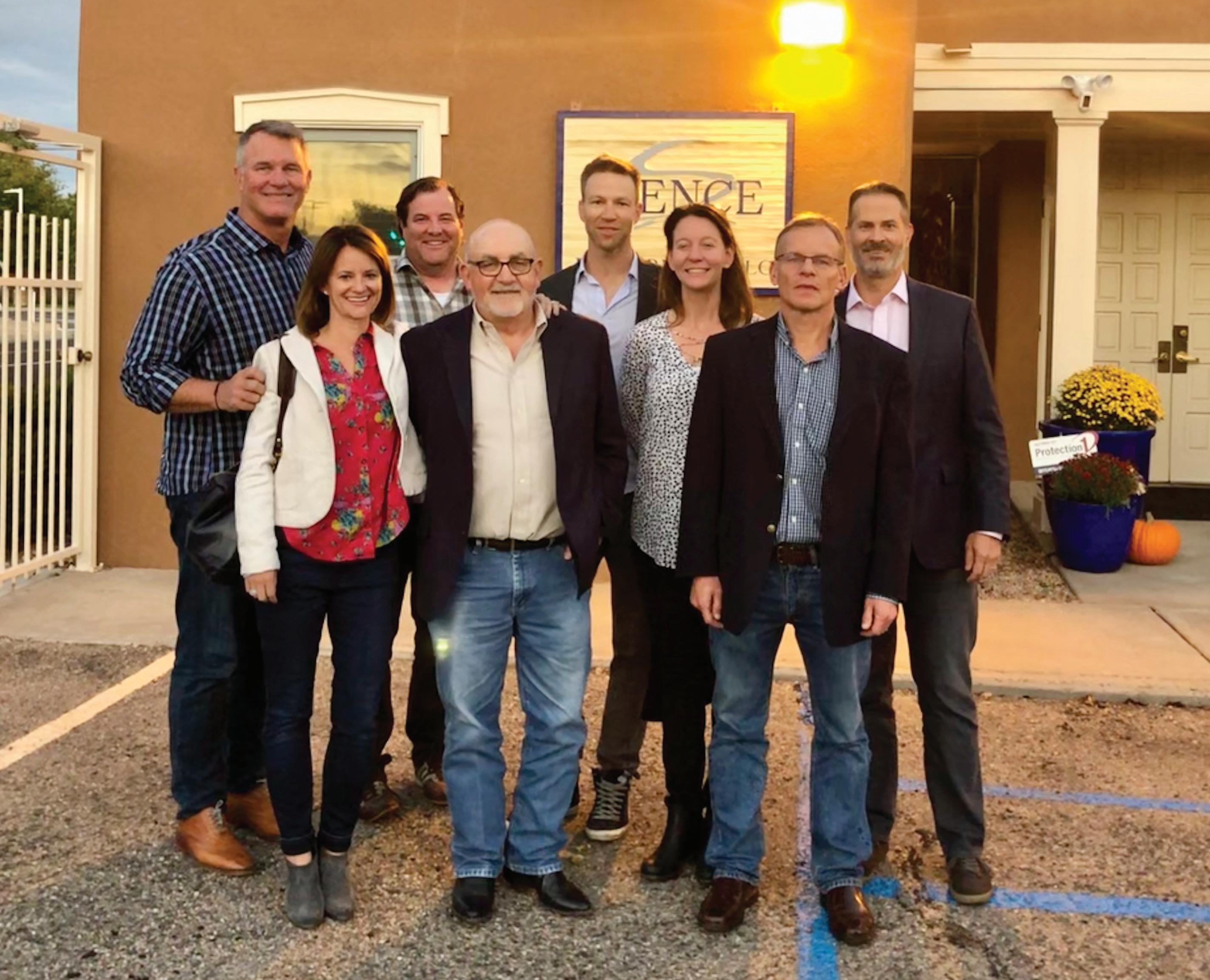

Montgomery
Montgomery & Andrews’ combination with Spencer Fane means our New Mexico team is now backed by a nationwide bench of experienced attorneys representing clients big and small. We’re proud to join a network of more than 540 attorneys from 22 practice groups in 27 offices.
At Spencer Fane, we work to unlock and add value in new and inventive ways. This is our passion; it’s what drives us. Our approach to serving our clients, colleagues, and communities has made us one of the highest-performing firms nationally in workplace satisfaction, client satisfaction, diversity traction, and growth.

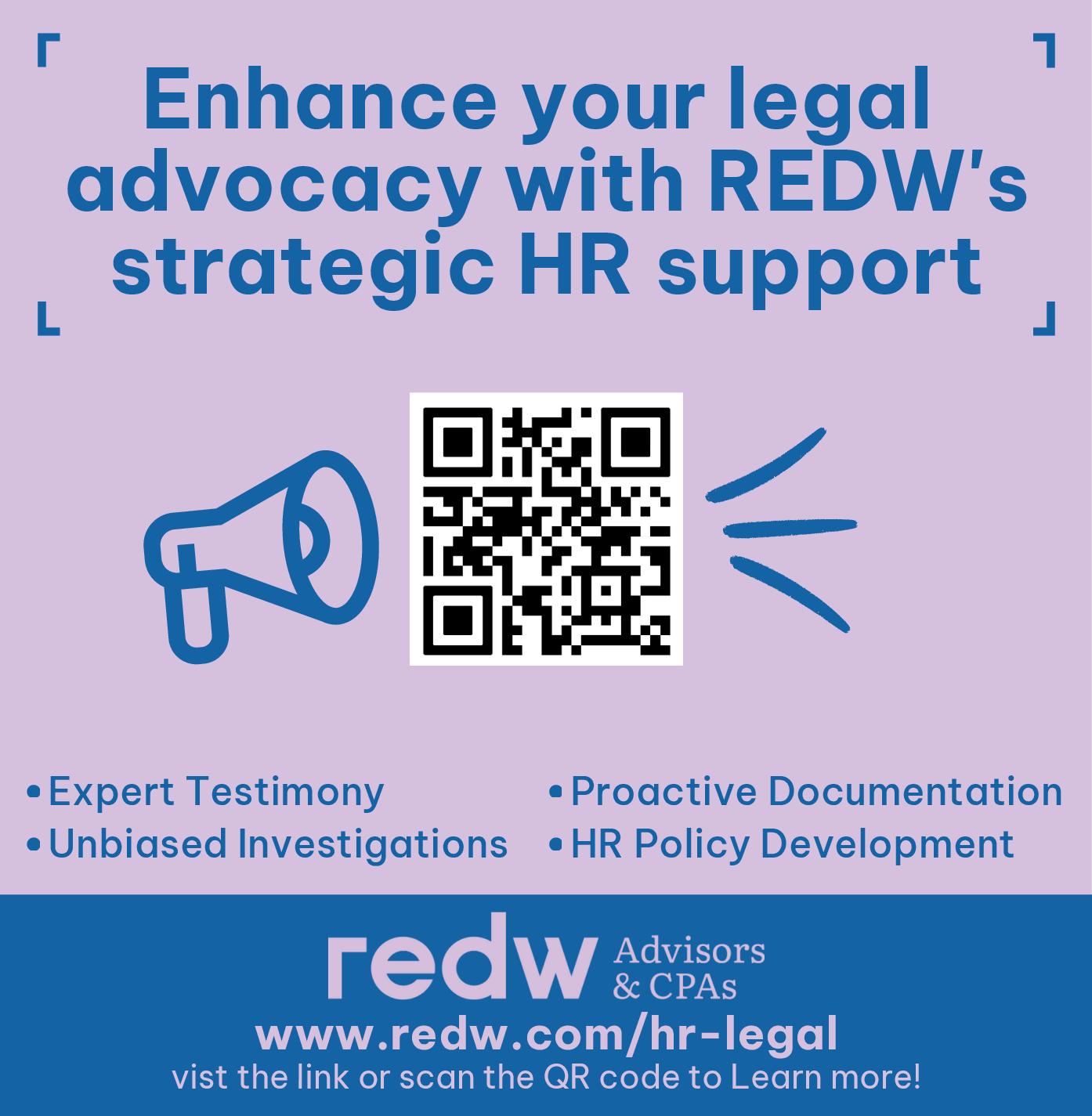




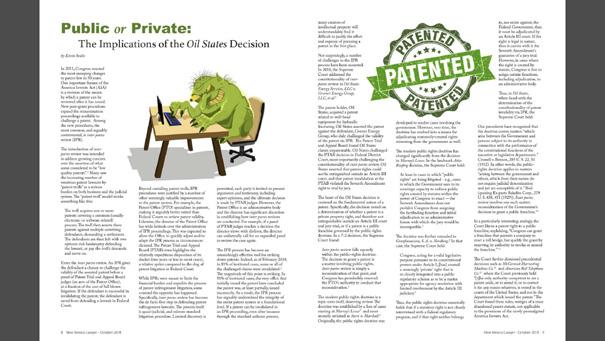
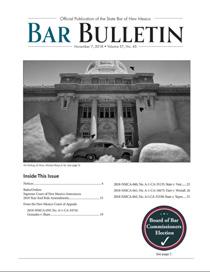

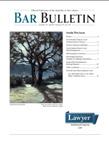

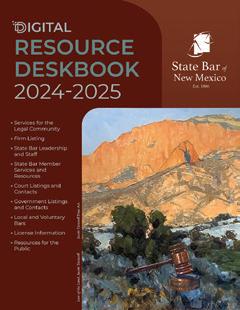

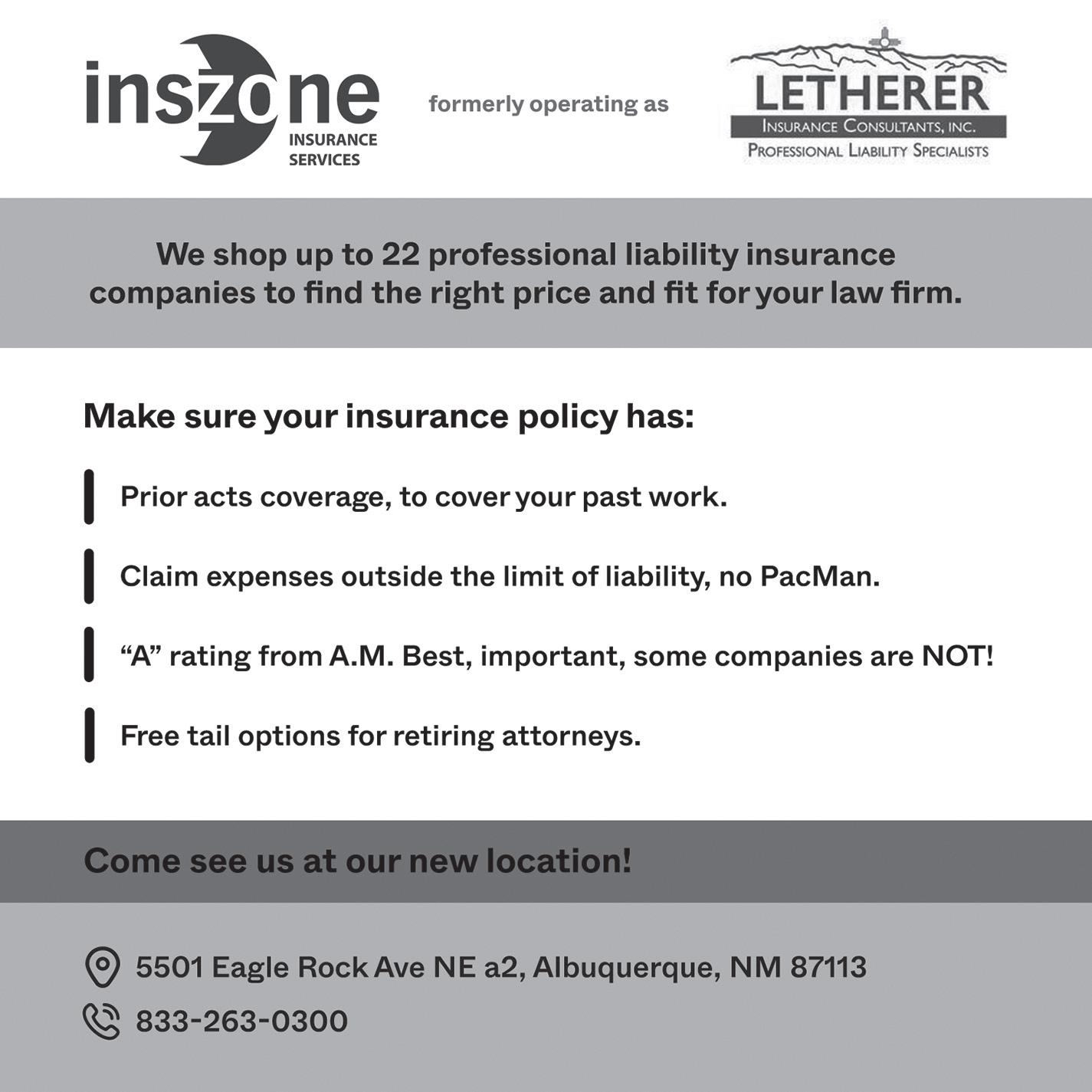




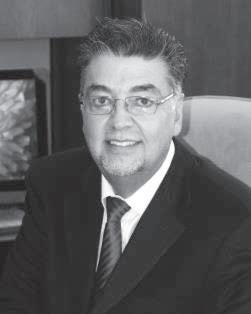
Busy Plaintiff's civil litigation firm located near the Journal Center is accepting resumes for an associate attorney with 5 (or more) years of practical experience. Candidates should possess strong oration skills, be proficient in conducting and defending depositions, have critical research and writing abilities and be familiar with motion practice. Practice areas include civil litigation/personal injury and general tort issues. Litigation experience preferred, but will not bar consideration. Salary commensurate with experience. Please forward a letter of interest along with a Resume and writing sample to:paralegal3.bleuslaw@gmail.com.
Description: Rodey, Dickason, Sloan, Akin & Robb, P.A. is currently seeking attorneys with Civil Litigation experience to work in our Albuquerque office. Qualifications: Ideal candidate must have strong academic credentials, excellent references, solid writing skills, deposition experience, hearing experience, and must be licensed in New Mexico. Experience in professional liability, medical negligence or personal injury is preferred. Candidates should possess the desire to work as a team, to mature their legal skills, and to represent their clients well. Rodey offers comprehensive benefits package, including health, dental and vision; professional development and multi-faceted mentoring program; FSA and HSA plan option(s); 401K plan/employer match; group life and longterm disability insurance; employee assistance program; wireless phone/services stipend. We are excited about our opportunity to partner with qualified candidates looking to advance their legal career. For consideration, please include a cover letter, resume, law school transcript and writing sample and submit via email to Ali Dyer, Human Resources Director at: jobs@rodey.com with “Litigation Attorney” in the subject line. All inquiries will be kept confidential. Rodey is an Equal Opportunity Employer. Rodey Law Firm is not accepting unsolicited resumes from search firms for this position.
Civerolo, Gralow & Hill, P.A. seeks an associate attorney to join our fast paced, well established civil litigation defense firm. This is a great opportunity to grow your talent in a collaborative environment. Salary DOE, generous benefits including health, dental & life insurance and 401K match. Please email your resume to custardh@civerolo.com. Inquiries kept confidential.
The City of Albuquerque, through the Albuquerque-Bernalillo County Air Quality Control Board (“Air Board”), is seeking a qualified attorney to contract with to provide legal representation and general legal services to the Air Board. This position is an independent contractor, and is not an employee of the City of Albuquerque. Applicant must be admitted to the practice of law by the New Mexico Supreme Court and be an active member of the Bar in good standing. A successful candidate will attend all Air Board meetings, have strong communication skills, knowledge of board governance and Robert’s Rules of Order, the NM Open Meetings Act, and knowledge of environmental rules and regulations including the Clean Air Act. Prior experience with, or advising, boards and commissions is preferred. Please submit a resume to the attention of “Air Board General Counsel Application”; c/o Angela Aragon; Executive Assistant; P.O. Box 2248, Albuquerque, NM 87103 or amaragon@cabq.gov.
Whitener Law Firm, P.A. is seeking a full-time associate attorney to assist with briefing, to attend hearings, depositions, and mediations as well as managing a caseload of personal injury cases. Candidates must be highly motivated, client oriented and enjoy working in a fast-paced environment. Candidates must be licensed to practice in the state of New Mexico. Must have at least five years of experience. Salary competitive and commensurate to experience and qualifications. Please send resume to Leanne Duree, Whitener Law Firm, P.A., 4110 Cutler Avenue, N.E., Albuquerque, NM 87110, fax to 505-242-3322 or e-mail to leanne@ whitenerlawfirm.com.
The Thirteenth Judicial District Attorney’s Office is seeking both entry level and experienced attorneys. Positions available in Sandoval, Valencia, and Cibola Counties. Enjoy the convenience of working near a metropolitan area while gaining valuable trial experience in a smaller office, providing the opportunity to advance more quickly than is afforded in larger offices. The 13th Judicial District offers flex schedules in a family friendly environment. Competitive salary starting @ 83,000+ depending on experience. Contact Krissy Fajardo @ kfajardo@da.state. nm.us or visit our website for an application @ https://www.13th.nmdas.com/ Apply as soon as possible. These positions fill fast!
The Eleventh Judicial District Attorney’s Office, Div. II, in Gallup, New Mexico, McKinley County is seeking applicants for a Contract Prosecutor to assist in the prosecution of criminal misdemeanor cases, felony cases and conflict of interest cases. The Contract Prosecutor position requires substantial knowledge and experience in criminal prosecution, rules of evidence and rules of criminal procedure; trial skills; the ability to draft legal documents and to research/analyze information and situations and the ability to work effectively with other criminal justice agencies and Law Enforcement. This position is open to all attorneys who have knowledge in criminal law and who are in good standing with the New Mexico Bar. Limited License is okay. Salary will result in a contractual agreement between the contract prosecutor and the District Attorney. Submit letter of interest and resume to District Attorney Bernadine Martin, 201 West Hill, Suite 100, Gallup, NM 87301, or e-mail letter to bmartin@da.state.nm.us.
Atkinson, Baker & Rodriguez, P.C. is a successful and established Albuquerquebased complex civil commercial and tort litigation firm seeking motivated and talented associate attorney candidates with great academic credentials. Join our small but growing focused Firm and participate in litigating cases from beginning to end with the support of our nationally recognized, experienced attorneys! Come work for a team that fosters development and growth to become a stand-out civil litigator. Highly competitive compensation and benefits. Send resumes, references, writing samples, and law school transcripts to Atkinson, Baker & Rodriguez, P.C., 201 Third Street NW, Suite 1850, Albuquerque, NM 87102 or. Please reference Attorney Recruiting.
MDZ Legal Group, In-house counsel for Loya Insurance Group, has openings for associate attorneys with 0-5 years of experience. We offer a collegial office environment; a good work / life balance, and many excellent employment benefits. Our Albuquerque office is growing and offering a competitive salary as well. Please send your resume to: Ulibarri@ mdzlegalgroup.law.
The City of Albuquerque Legal Department is hiring for various Assistant City Attorney positions. Hybrid in person/remote work schedule available. The Legal Department’s attorneys provide a broad range of legal services to the City and represent it in legal proceedings in court and before state, federal and administrative bodies. Current open positions include: Labor/ Employment Attorney: The City is seeking an attorney to represent it in litigation related to employment and labor law in New Mexico State and Federal Courts, before the City of Albuquerque Personnel Board, and before the City of Albuquerque Labor Board; General Counsel: The City is seeking attorneys to provide a broad range of general counsel legal services to various City departments, boards, commissions, and agencies in the Municipal Affairs and Real Estate and Operations divisions. Responsibilities include, but are not limited to, drafting legal opinions, reviewing and drafting ordinances and executive/ administrative instructions, reviewing and drafting contracts, and providing general advice and counsel on day-to-day operations for various Departments throughout the City; Land Use and Enforcement Division: The City is seeking an attorney to enforce traffic violations and provide general counsel support to various Departments and programs, including, but not limited to, Animal Welfare and automated speed enforcement; Air Quality Attorney: The City is seeking an attorney for the Real Estate and Operations Division. This attorney will serve as general counsel to the City’s Environmental Health Department (“EHD”) regarding Air Quality issues throughout Bernalillo County including at federal and state facilities. This attorney will provide a broad range of legal services to EHD including, but not limited to, administrative enforcement actions, litigation and appeals, stationary source permits and "fugitive dust" permits, air quality monitoring and quality assurance, guidance regarding EPA grants, control strategies, work with EHD teams to develop new or amended regulations to be proposed to the Albuquerque-Bernalillo County Air Quality Control Board (“Air Board”), attend and represent EHD staff at rulemaking and adjudicatory hearings, review and draft intergovernmental agreements regarding air quality issues, review and draft legislation regarding air quality; General Counsel to APD: The City is seeking an attorney to advise APD regarding policies, procedures and training, review and negotiate contracts, review uses of force, draft legal opinions, review and draft legislation and administrative instructions. Additional duties may be assigned based on experience; Utilities/PRC: The City is seeking an attorney to represent it in
matters regarding franchise and right of way agreements, public utilities, broadband and telecommunications, and will appear before the Public Regulation Commission (“PRC”). Attention to detail and strong writing and interpersonal skills are essential. Preferences include: experience with litigation, contract drafting and review, government agencies, government compliance, and policy writing. Salary based upon experience. For more information or to apply please send a resume and writing sample to Angela Aragon at amaragon@cabq.gov.
Mexico Legal Aid –Current Job Opportunities
New Mexico Legal Aid (NMLA) provides civil legal services to low income New Mexicans for a variety of legal issues including domestic violence/family law, consumer protection, housing, tax issues and benefits. NMLA has locations throughout the state including Albuquerque, Santa Fe, Las Cruces, Gallup, Roswell, Silver City, Clovis, Hobbs, Las Vegas, Taos, and Santa Ana. Managing Attorney: Multiple positions; Staff Attorney Positions: Multiple positions; Paralegal: Multiple positions. Please visit our website for all current openings, NMLA benefits, Salary Scales and instructions on how to apply - https:// newmexicolegalaid.isolvedhire.com/jobs/
Ashton Horton Mullins PC provides comprehensive estate planning services to our clients. We pride ourselves on our commitment to excellence and our personalized approach to each client. We are seeking a motivated and detail-oriented Associate Attorney to join our estate planning team. Experience in estate planning is not required as we are looking to grow our team with an attorney who has the desire to learn estate planning and we will provide structured mentorship and training. Key responsibilities that will increase with mentorship and training: Draft wills, trusts, and other estate planning documents; Advise clients on estate planning strategies and tax implications; Conduct client meetings and maintain strong client relationships; Collaborate with senior attorneys on complex cases. What we offer: Competitive salary and benefits package; Opportunities for professional development and growth; Supportive and collaborative work environment; Position in Albuquerque or Santa Fe with flexibility on hybrid work. Please submit your resume, cover letter, and a writing sample to bridget@ ahm.law. We look forward to hearing from you! Ashton Horton Mullins PC is an equal opportunity employer. We celebrate diversity and are committed to creating an inclusive environment for all employees.
NO BILLABLE HOURS! STUDENT LOAN FORGIVENESS! ELEVEN PAID HOLIDAYS! The Child Support Services Division (CSSD) of the New Mexico Health Care Authority (previously the Human Services Department) is HIRING entry level and experienced attorneys to work in the Las Cruces, Los Lunas, Clovis, or Roswell offices. Salary is based on SPO’s NEW pay bands (LH) with a midpoint of $108,296.00, that is adjusted depending upon experience. CSSD offers fitness and wellness leave (2 hours/week) and alternative work schedules once you have completed probation. Newly licensed attorneys or those wishing to relocate to New Mexico are encouraged to apply. Apply online: State Personnel Office (https://careers.share.nm.gov), or contact Reina Owen DeMartino at Reina. OwenDeMartino@hca.nm.gov.
The Fifth Judicial District Attorney’s office has immediate positions open for new and/ or experienced attorneys. Salary will be based upon the New Mexico District Attorney’s Salary Schedule with salary range of an Assistant Trial Attorney ( $ 72,301.00 ) to a Senior Trial Attorney ( $85,222.00), based upon experience. Must be licensed in the United States. These positions are located in the Carlsbad and Roswell, NM office. The office will pay for your New Mexico Bar Dues as well as the National District Attorney’s Association membership. Please send resume to Dianna Luce, District Attorney, 102 N. Canal, Suite 200, Carlsbad, NM 88220 or email to nshreve@da.state.nm.us
The New Mexico Prison & Jail Project (NMPJP) is a nonprofit legal organization that advocates to protect the rights of incarcerated people in New Mexico by bringing civil rights lawsuits and other legal actions on their behalf. NMPJP has an open position for a full-time staff attorney. Generous benefits package. Salary dependent on experience. The ideal candidate will have a passion for advocating for the rights of people who are incarcerated and significant experience with federal and/or state litigation. We also seek candidates with a proficiency in legal research and document drafting; and excellent written, verbal and interpersonal communication skills. Email a letter of interest, resume and legal writing sample by December 1, 2024 to the selection committee at info@nmpjp.org.
Pueblo of Laguna, NM – Great employer and benefits, competitive pay DOE! Seeking full-time attorney to provide legal advice and representation to Laguna members on broad range of civil matters, including consumer, probate, benefits, and family issues. Leisurely commute from Albuquerque metro or Grants, and partial remote-work available. Apply now, open until filled. Application instructions and position details at: https://www.lagunapueblo-nsn.gov/ elected-officials/secretarys-office/humanresources/employment/
The Executive Director serves as a part of the Firm's executive leadership, and plays an integral role in helping to develop the strategies to support the Firm’s vision and mission, and the operational tactics to achieve identified goals. The role requires significant initiative with regard to: 1) direction of the Firm; 2) business operations; 3) client service; 4) consistent and transparent communications across the Firm; and 5) collaboration between the management team and staff. SHRM Certification preferred. Email cover letter and resume to: info@ rothsteinlaw.com
Assistant Trial Attorney or Trial Attorney wanted for immediate employment with the Seventh Judicial District Attorney’s Office, which includes Catron, Sierra, Socorro and Torrance counties. Employment will be based primarily in Socorro County (Socorro, NM). Socorro is approximately a one hour commute from Albuquerque. Must be admitted to the New Mexico State Bar. Salary range will be $72,301 - $90,377 and commensurate with experience and budget availability. Will also have full benefits and one of the best retirement plans (PERA) in the country. Send resume to: Seventh District Attorney’s Office, Attention: J.B. Mauldin, P.O. Box 1099, 302 Park Street, Socorro, New Mexico 87801. Or email to: jbmauldin@ da.state.nm.us .
Attorney
Quiñones Law Firm LLC is a well-established defense firm in Santa Fe, NM in search of a full-time associate attorney with minimum 5 years of legal experience and willing to work minimum of 30 hours per week. Generous compensation and health benefits. Please send resume to quinoneslaw@cybermesa.com
Modrall Sperling, one of New Mexico's largest law firms, is searching for Associate attorneys to join our general civil litigation practice. The ideal candidates should have a minimum of 2 to 3 years of civil litigation experience with excellent research, writing, and verbal advocacy skills. Qualified applicants must have experience working on large cases, including conducting legal research, drafting briefs, taking and defending depositions, arguing in court is preferred. Strong academic credentials required. Candidates must be admitted, or eligible for admission to the New Mexico Bar. As one of New Mexico’s largest firms, we are able to offer associate attorneys high quality, challenging work and outstanding career opportunities. Please send a letter of interest and resume to attyapplicants@modrall.com. All inquiries will be kept confidential.
The Eleventh Judicial District Attorney’s Office, Div. II, in Gallup, New Mexico, McKinley County is seeking applicants for Assistant Trial Attorneys, Trial Attorneys and Senior Trial Attorneys. You will enjoy working in a community with rich culture and history while gaining invaluable experience and making a difference. The McKinley County District Attorney’s Office provides regular courtroom practice, supportive and collegial work environment. You are a short distance away from Albuquerque, Southern parts of Colorado, Farmington, and Arizona. We offer an extremely competitive salary and benefit package. Salary commensurate with experience. These positions are open to all licensed attorneys who are in good standing with the bar within or without the State of New Mexico. Please Submit resume to District Attorney Bernadine Martin, 201 West Hill, Suite 100, Gallup, NM 87301, or e-mail letter to Bmartin@da.state.nm.us. Position to commence immediately and will remain open until filled.
Blackgarden Law is looking for a full-time transactional Attorney with at least 2 years of meaningful experience in Business and Corporate Law. Corporate securities law is a requirement. This is an in-person or hybrid position. Visit our website at blackgardenlaw. com/careers for a full job description and application instructions.
Assistant Trial Attorney or Trial Attorney- Sierra County
Assistant Trial Attorney or Trial Attorney wanted for immediate employment with the Seventh Judicial District Attorney’s Office, which includes Catron, Sierra, Socorro and Torrance counties. Employment will be based primarily in Sierra County (Truth or Consequences, NM). T or C is approximately a one hour commute from Las Cruces. Must be admitted to the New Mexico State Bar. Salary range will be $72,301 - $90,377 and commensurate with experience and budget availability. Will also have full benefits and one of the best retirement plans (PERA) in the country. Send resume to: Seventh District Attorney’s Office, Attention: J.B. Mauldin, P.O. Box 1099, 302 Park Street, Socorro, New Mexico 87801. Or email to: jbmauldin@ da.state.nm.us .
The Bar Bulletin publishes twice a month on the second and fourth Wednesday. Advertising submission deadlines are also on Wednesdays, three weeks prior to publishing by 4 pm.
Advertising will be accepted for publication in the Bar Bulletin in accordance with standards and ad rates set by publisher and subject to the availability of space. No guarantees can be given as to advertising publication dates or placement although every effort will be made to comply with publication request. The publisher reserves the right to review and edit ads, to request that an ad be revised prior to publication or to reject any ad. Cancellations must be received by 10 a.m. on Thursday, three weeks prior to publication.
For more advertising information, contact: Marcia C. Ulibarri at 505-797-6058 or email marcia.ulibarri@sbnm.org
Serpe Andrews, PLLC is a growing regional civil defense firm currently seeking associate attorneys with 2+ years of experience to work in our Santa Fe or Las Cruces offices. Serpe Andrews provides civil defense in a range of areas, including medical malpractice, employment, personal injury, and government liability. The candidate must be licensed in New Mexico. Prior litigation experience preferred, but not required. A successful candidate will have a strong interest in learning and practicing all stages of litigation, from preliminary investigations to jury trials. After a 3-month onsite training period, a hybrid schedule will be considered. Very competitive salary and benefits packages include quarterly bonuses, 401K plan, medical/dental/vision plan, and tech stipends. Interested candidates should send cover letter and resume to Leslie Rodriguez (lrodriguez@serpeandrews.com) with “New Mexico Attorney Position” in the subject line.
Appellate boutique Durham, Pittard & Spalding LLP is looking for bright, motivated, and talented lawyers to join our growing and successful team in our office in Santa Fe. Our firm specializes in civil appeals and provides trial support to some of the best trial lawyers in New Mexico and throughout the country in high-stakes, complex litigation on behalf of plaintiffs. Our practice is heavily focused on catastrophic injury and wrongful death litigation, including product liability, toxic tort, medical malpractice, and trucking, but our attorneys also handle a wide variety of other civil matters including civil rights, employment, and the occasional domestic relations or criminal appeal. We are looking for candidates who enjoy researching, writing, and presenting oral argument to trial and appellate courts. Judicial clerks or past clerkship experience are preferred. The position offers the opportunity to learn from experienced practitioners and to develop the skills of a top-notch appellate attorney. If interested, please send a cover letter, resume,
Stiff, Garcia & Associates, defense insurance firm seeking full time, experienced associate eager to work and motivated. Must have 3 + years of experience. Benefits included, Health, Dental, 401K, LTD & Life Ins. Salary ranges from $85,000 to $120,000.00. Please send resume to John Stiff at jstiff@stifflaw.com or Karen Arrants at karrants@stifflaw.com
The State Bar of New Mexico seeks qualified applicants to join our team as a fulltime (40 hours/week) Digital Marketing and Communications Coordinator. The successful applicant will work closely with State Bar and Bar Foundations’ staff to communicate information to State Bar licensees and the public. This position will support the Communications department by performing administrative tasks including website maintenance, social media marketing and email communications. $21-$23/hour, depending on experience and qualifications. Generous benefits package included. This position qualifies for partial telecommuting. Qualified applicants should submit a cover letter and resume to HR@sbnm.org. Visit www.sbnm.org/SBNMjobs for full details and application instructions.
Quinones Law Firm LLC is a well-established defense firm in Santa Fe, NM in search of a part-time legal assistant/paralegal with minimum 5 years of Legal Assistant/Paralegal experience. Generous compensation and health benefits. Please send resume to quinoneslaw@cybermesa.com
Madison, Mroz, Steinman, Kenny & Olexy, P.A., a well-established civil litigation firm, seeks a full-time Legal Assistant/ Legal Secretary. The ideal candidate should have a minimum of 5 years civil litigation experience, with preference towards medical malpractice, the ability to multitask effectively in a fast-paced environment, possess excellent skills in case management and calendar procedures, ability to assess priorities, highly motivated, detail oriented, strong work ethic, knowledge of State and Federal court rules, and proficient in Odyssey and CM/ECF e-filing. We offer an excellent fully funded health insurance plan, 401(K) and Profit Sharing Plan, paid designated holidays, PTO, and a professional and teamoriented environment. Please submit your resume to: becky@madisonlaw.com, or mail to Office Administrator, P.O. Box 25467, Albuquerque, NM 87125-5467.
The New Mexico State Bar Foundation seeks qualified applicants to join our team as a fulltime (40 hours/week) Bilingual Telephone Helpline Intake Screener. The successful applicant will answer Bar Foundation Legal Helplines incoming calls, conduct/complete intakes and establish case files in the Legal Services Programs electronic case management systems. Fluency in Spanish is required. $17$19/hour, depending on experience and qualifications. Generous benefits package included. This position qualifies for partial telecommuting. Qualified applicants should submit a cover letter and resume to HR@sbnm. org. Visit www.sbnm.org/SBNMjobs for full details and application instructions.
Paralegal position in established commercial civil litigation firm. Prior experience preferred. Requires knowledge of State and Federal District Court rules and filing procedures; factual and legal online research; trial preparation; case management and processing of documents including acquisition, review, summarizing, indexing, distribution and organization of same; drafting discovery and related pleadings; maintaining and monitoring docketing calendars; oral and written communications with clients, counsel, and other case contacts; proficient in MS Office Suite, AdobePro, Powerpoint and adept at learning and use of electronic databases and legal software technology. Must be organized and detailoriented professional with excellent computer skills. All inquiries confidential. Salary DOE. Competitive benefits. Email resumes to or Fax to 505-764-8374.
Terry & deGraauw, P.C., three-time winner of ABQ Business First’s Best Places to Work, is seeking a full-time family law paralegal. Experience with Microsoft Office and organizational skills required; legal experience preferred. Ideal candidate is highly motivated, possesses strong interpersonal skills and a passion for client relations. Opportunities for growth as well as competitive pay and benefits. Inquiries confidential, email resumes to kss@ tdgfamilylaw.com.
Part-Time Office Administrator and Bookkeeper for Small
Experienced office administrator offering part-time support for small or solo law practices. Available services include: Accounts Payable & Receivable, Payroll processing and Quarterly Payroll Reports through QuickBooks, Gross Receipts Taxes, Bank Account reconciliations, Vendor negotiations, Property management, Client billing, Benefits administration, Executive support (calendar management, travel arrangements, meeting coordination), General office management and support. Available for either remote or on-site work. Contact me to discuss how I can assist your firm. References available upon request. Call or text Laura at (505) 480-6979.
Santa Fe Office Space Available
Move in ready office space. Could work well for general practitioners interested in collaborating or looking for referrals. For additional details call Katherine Moss at (505) 920-5112.
Office Alternatives, locally owned circa 2006, has Executive Office Suites, Virtual mail/ professional address, Virtual receptionist service, hourly offices and conference room rentals, Witness and Notary services. OA provides the infrastructure for attorney practices to lower your overhead and work in a professional environment. 2 convenient locations-Journal Center and Riverside Plaza. 505-796-9600 www.officealternatives.com.
Office Suites Available
Locally owned and operated. Move-in ready suites (155 sq ft & 350 sq-ft) ideal for a solo attorney. Conveniently located in the North Valley with easy access to I-25, Paseo Del Norte, and Montano. Visit our website www. sunvalleyabq.com for more details or call Jaclyn Armijo at 505-343-2016.
Two Santa Fe Offices Available January 1,2025
Two adjacent offices in a six-office professional suite. Centrally located in The Saint Francis Professional Center, the suite has a large reception area, kitchenette, and ample parking for clients. Rent includes alarm, utilities, and janitorial services. $975 mo/ both 505-795-0077
Law Office Building
Updated 2,877 square foot law office building in the Sawmill District with 5 offices, secretarial area, library/conference room, file room, and 15 parking spaces. Vaulted ceilings, refrigerated cooling/heating, and kitchenette. Handicap accessible Men and Women’s Restroom. Call Keith Bandoni at 505-880-7015.
Will of David Paul Powers: If you possess or have information about a Will for David Paul Powers, formerly of Lindrith and Albuquerque, NM, please contact Jerry Powers, 15 Blanco Dr. Edgewood NM 87015, or telephone 505-321-6161.
Anyone having any information about the last Will and Testament of decedent Anthony A. Cordova, of Albuquerque, executed on or about December 18, 2020, witnessed by Sharon Paternoster and Christ Waites, please contact Kevin D. Hammar, Esq. attorney for the nominated Personal Representative at (505) 566-8787 or by email at khammar@ abqlawnm.com.



ABA Free Legal Answers is a virtual legal advice portal where qualifying users request brief advice about a specific civil legal issue and pro bono volunteer attorneys provide information and basic legal advice.
Register as a volunteer attorney today and you will be able to provide answers 24/7/365.
The platform can be accessed anytime, anywhere at your convenience.
To Register as a volunteer attorney:
•Go to https://nm.freelegalanswers.org/
•Click on “Attorney Registration” and follow the prompts

Est. 1886
As part of our mission to serve New Mexico’s legal community, the State Bar of New Mexico is dedicated to ensuring that licensees are up-to-date with the latest information and announcements via regular digital e-newsletters and email communications. From news pertinent to New Mexico courts to pro bono opportunities, our emails cover a variety of legal information.

Sent out each Friday morning, our weekly eNews e-newsletter is a comprehensive email containing a variety of information and announcements from the State Bar of New Mexico, the New Mexico State Bar Foundation, New Mexico courts, legal organizations and more. To advertise in eNews, please email marketing@sbnm.org. To have your organization’s announcements or events published in eNews, please contact enews@sbnm.org.
The State Bar of New Mexico’s official publication, the Bar Bulletin, is published on our website on the second and fourth Mondays of each month. The day the Bar Bulletin is published digitally, an email is distributed to the legal community linking to the online Bar Bulletin. To publish your notices, announcements or articles in the Bar Bulletin, contact notices@sbnm.org
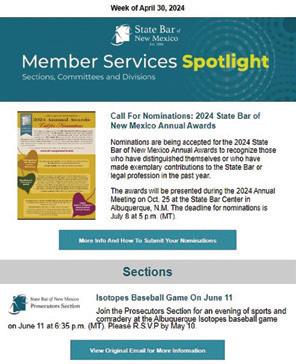
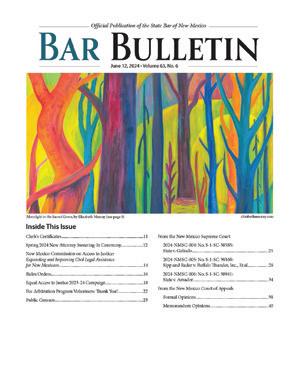
Emailed each Tuesday morning, our weekly Member Services Spotlight e-newsletter contains announcements and events from each of the State Bar’s Sections, Committees and Divisions. To highlight your Section, Committee or Division’s latest news, email memberservices@sbnm.org.
Distributed each Wednesday morning, the CLE Weekly Roundup provides a highlight of the New Mexico State Bar Foundation Center for Legal Education’s upcoming CLE courses with information regarding the date and time of the course, credits earned and link to register. For more information regarding the CLE Weekly Roundup, please contact cleonline@sbnm.org.
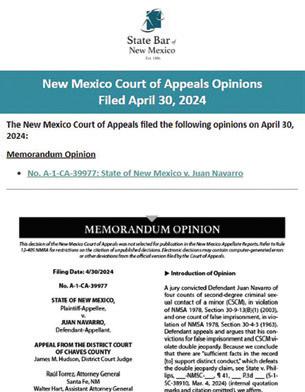
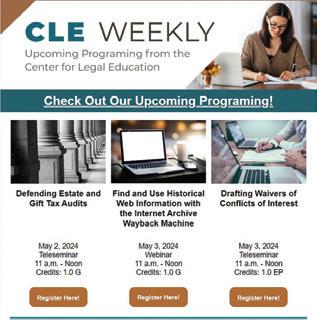
As a licensee benefit, the State Bar of New Mexico distributes introductions to the New Mexico Court of Appeals’ published opinions with links to the full opinions the day they are published. For more information regarding the Court of Appeals opinions distribution, please contact opinions@sbnm.org
Disseminated quarterly, the State Bar of New Mexico’s Pro Bono Quarterly e-newsletter provides the New Mexico legal community with an overview of initiatives to provide pro bono legal services for New Mexican residents in need. For more information on the newsletter or to advertise your pro bono or volunteer opportunity, contact probono@sbnm.org.
